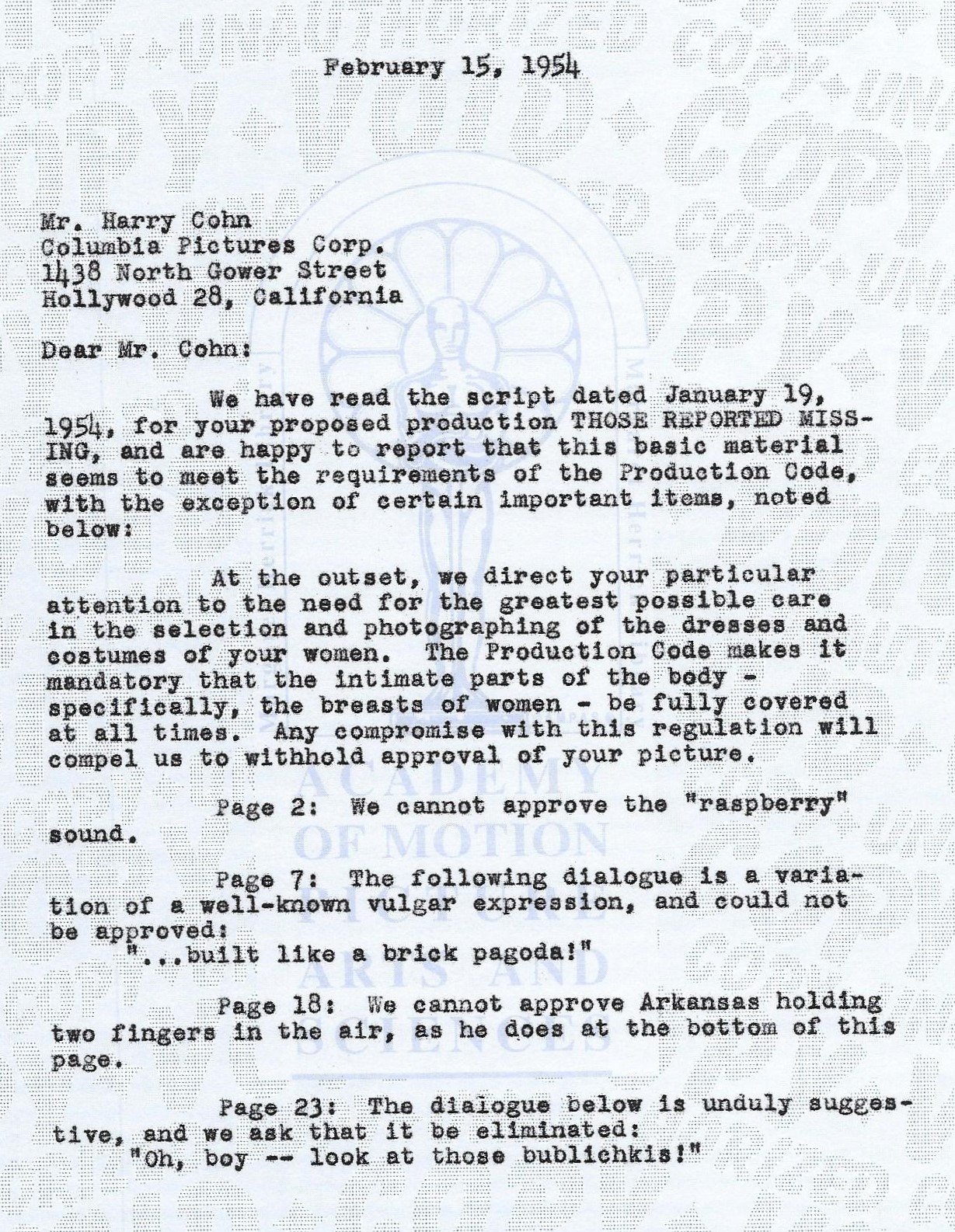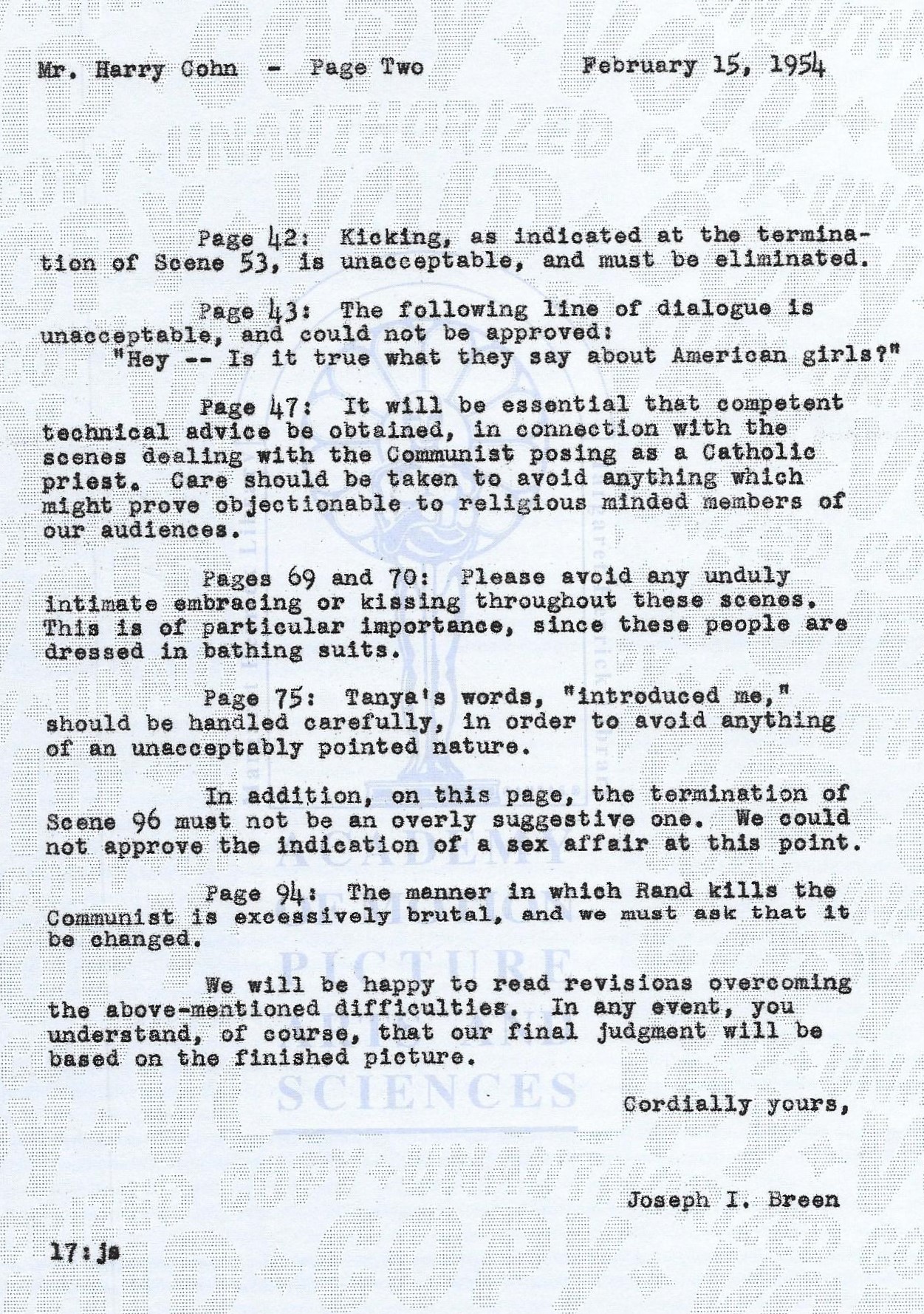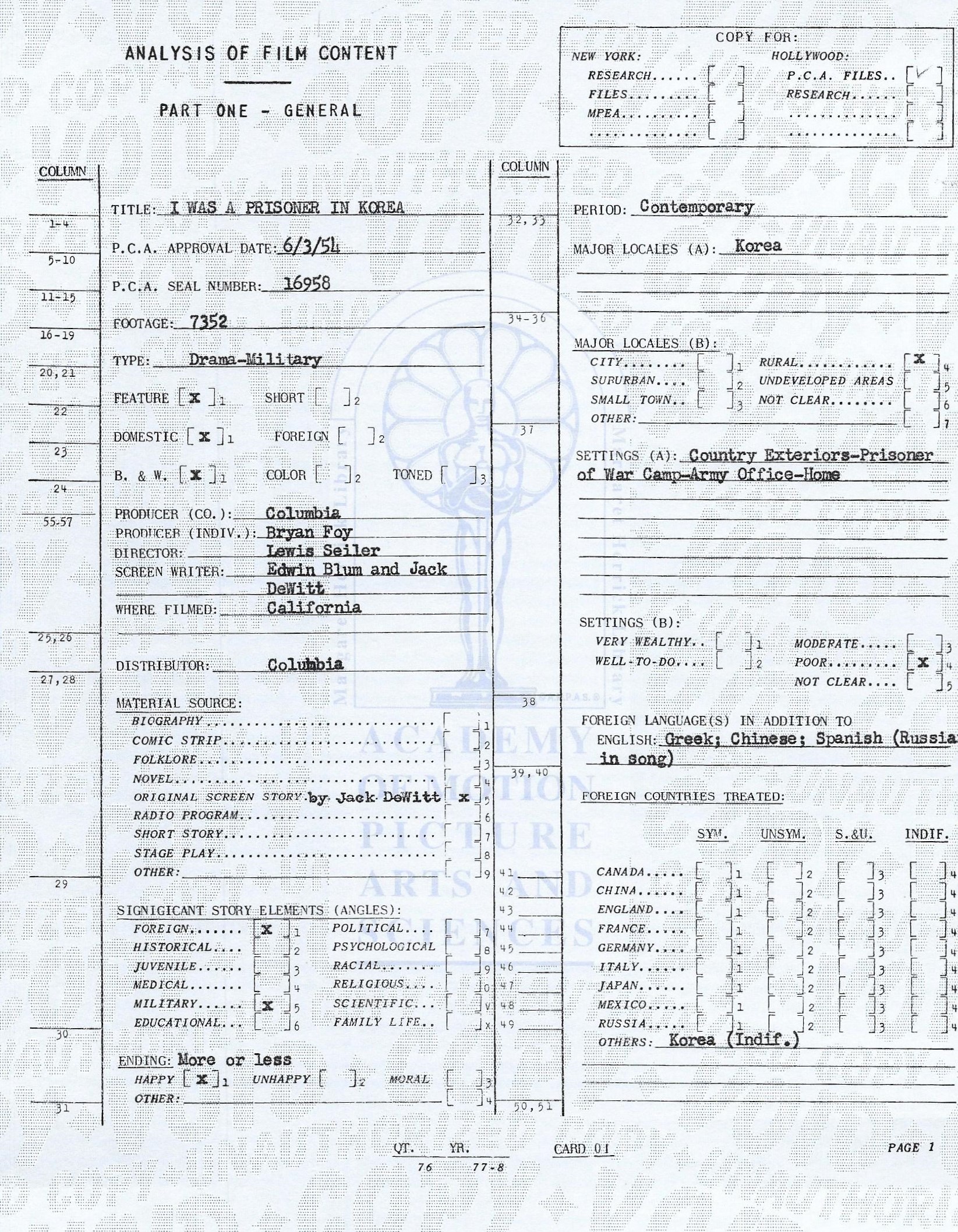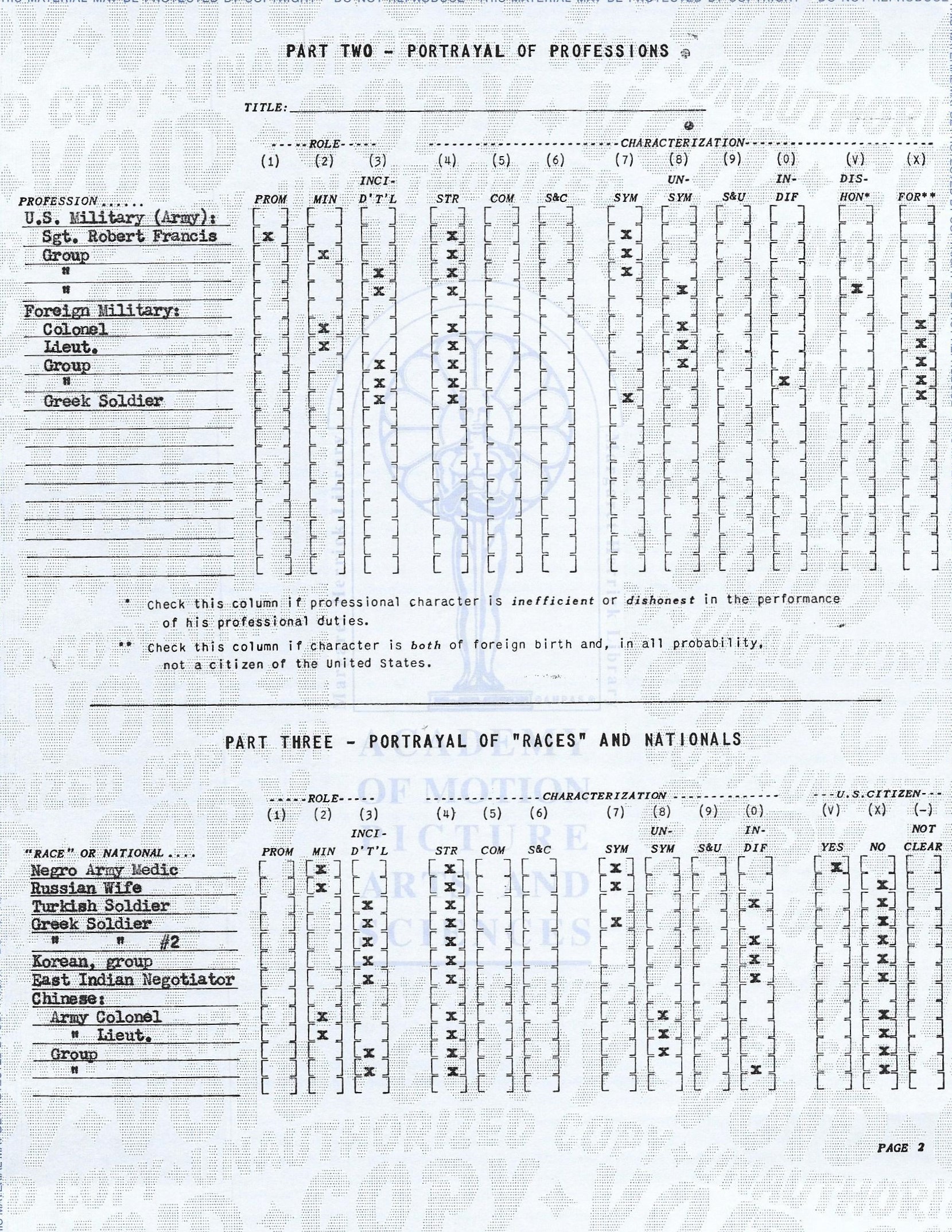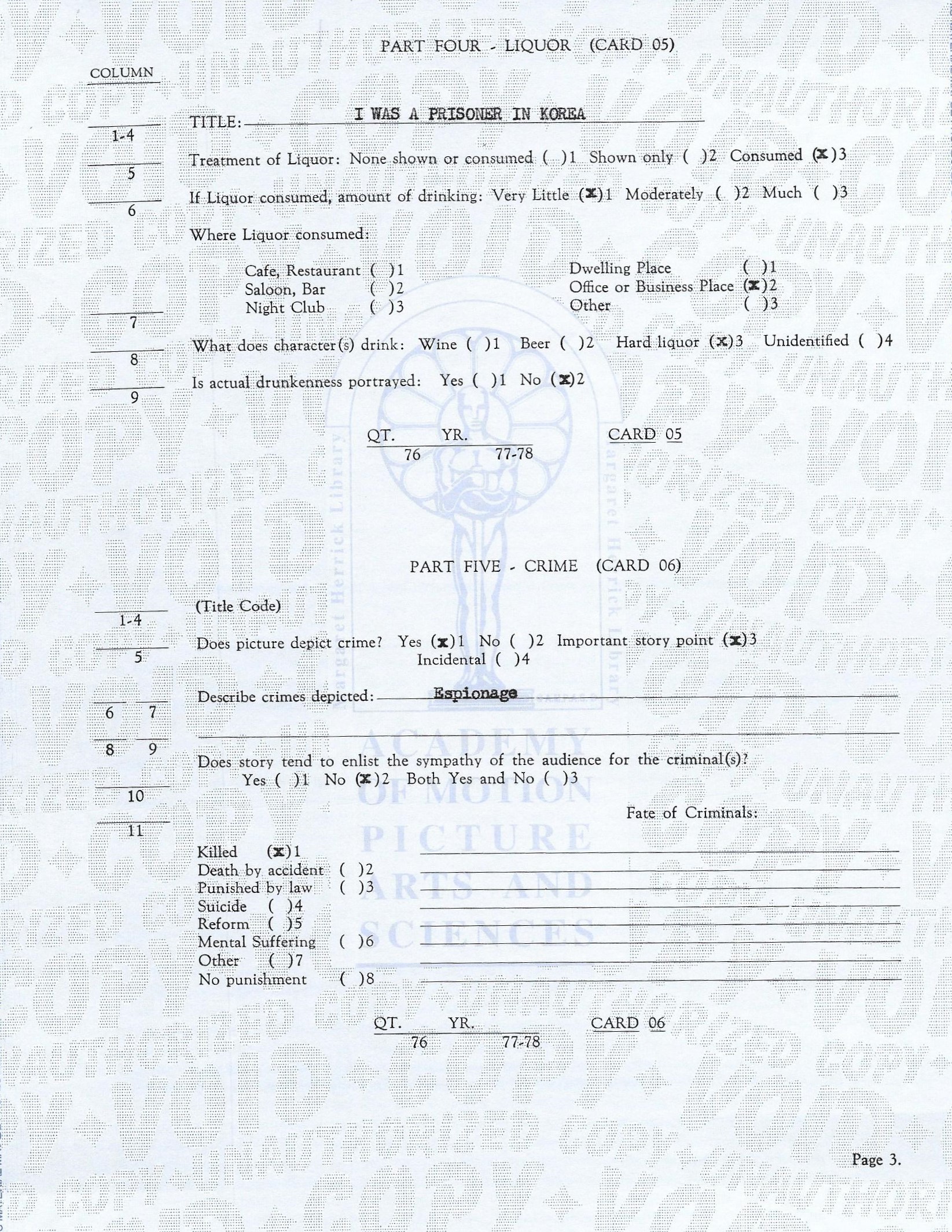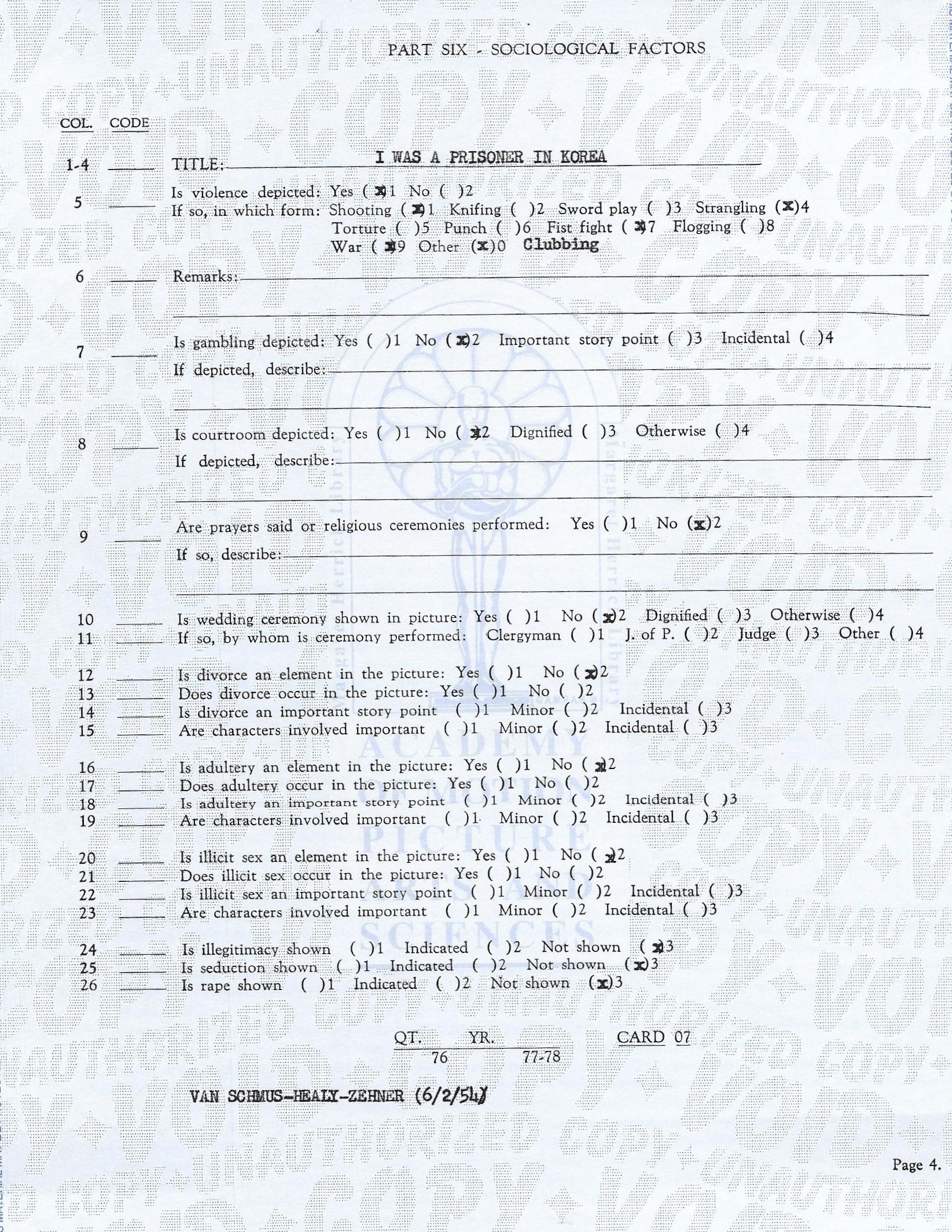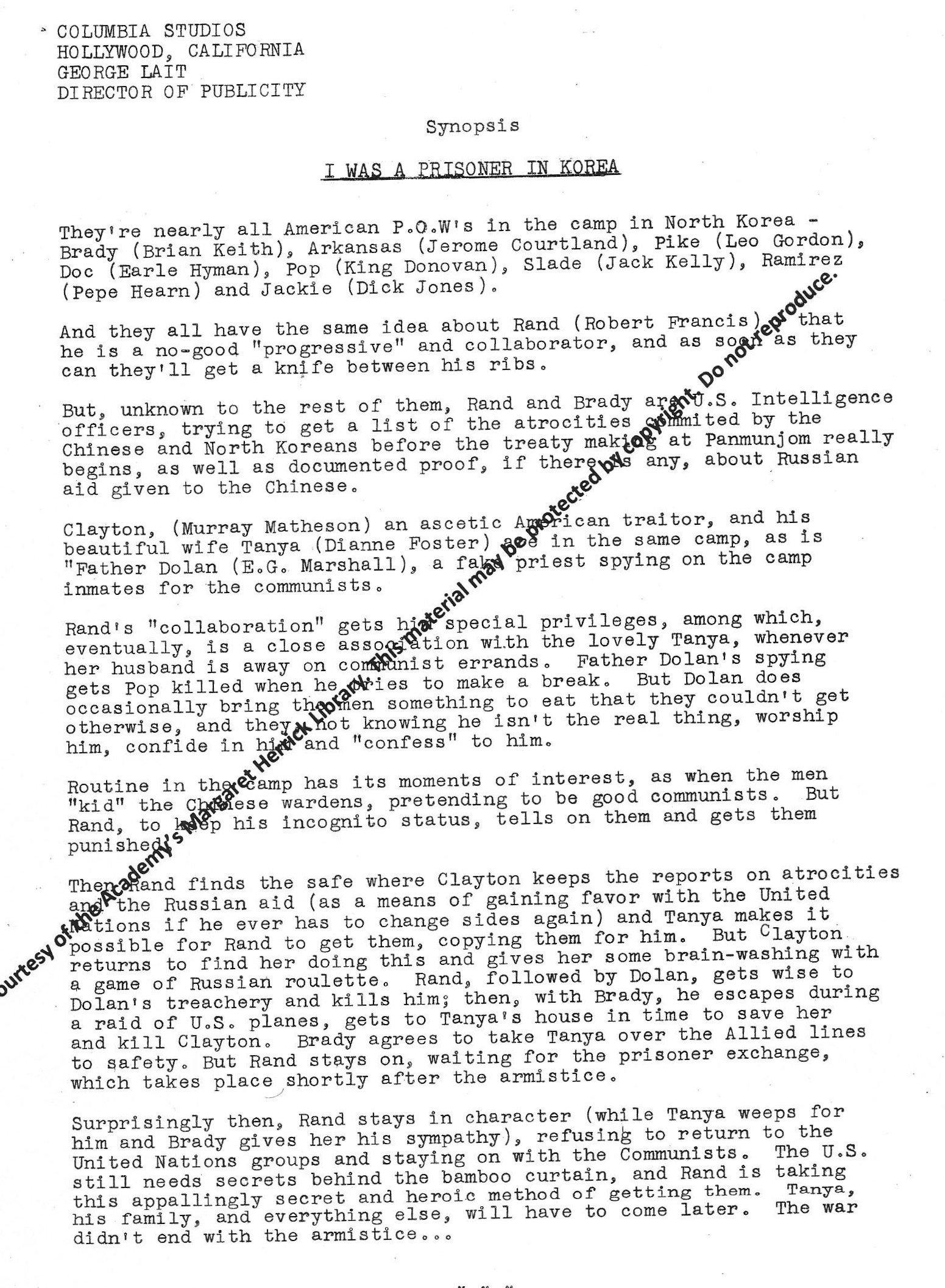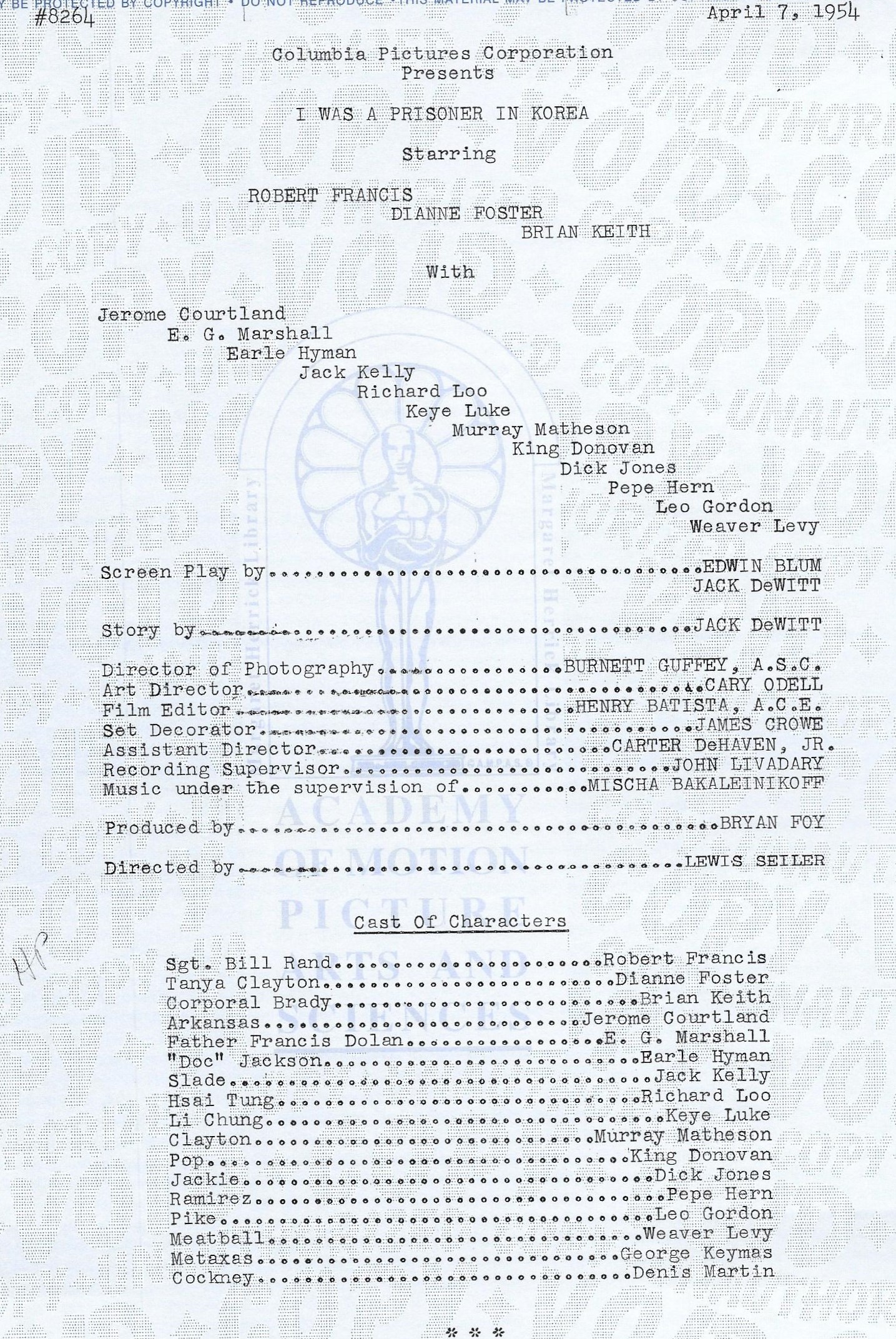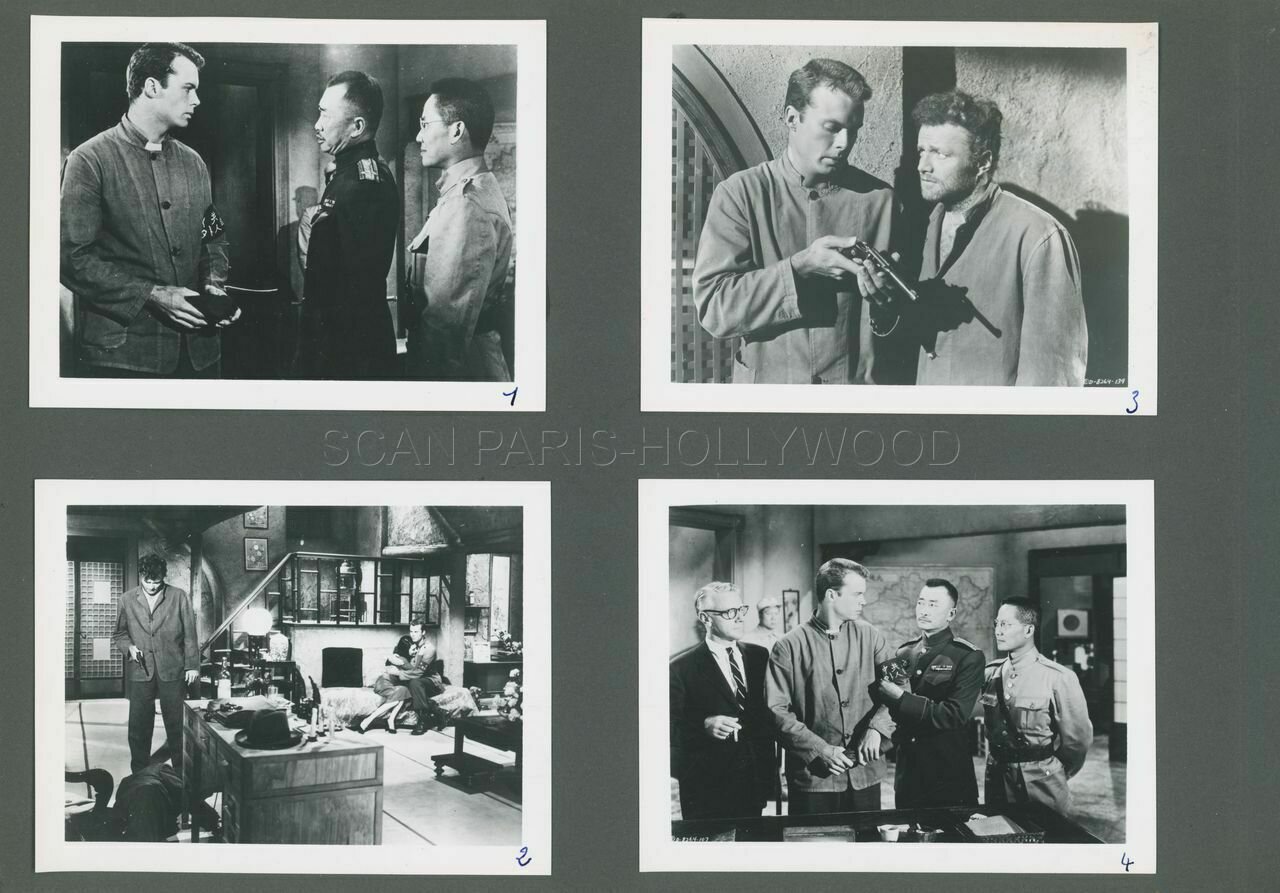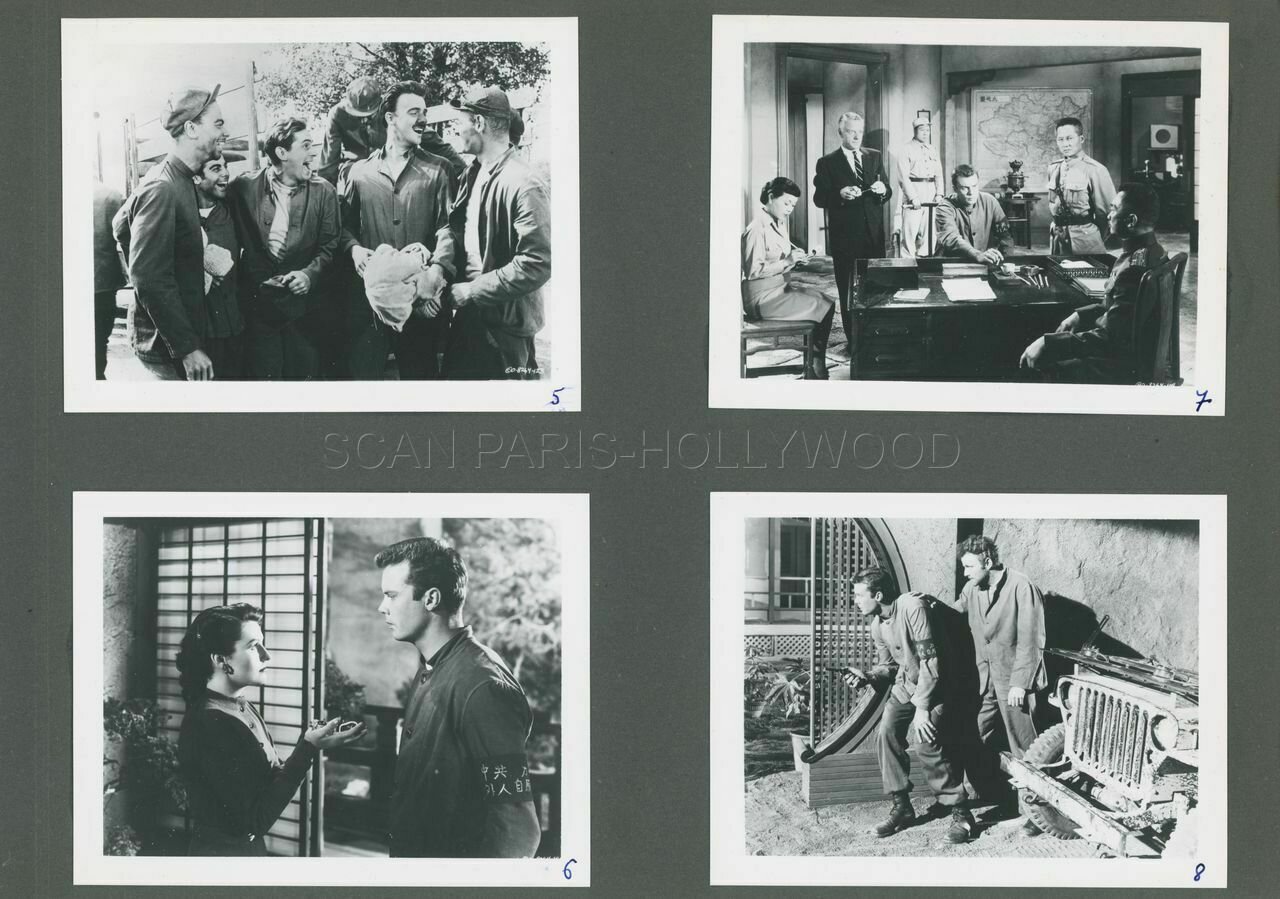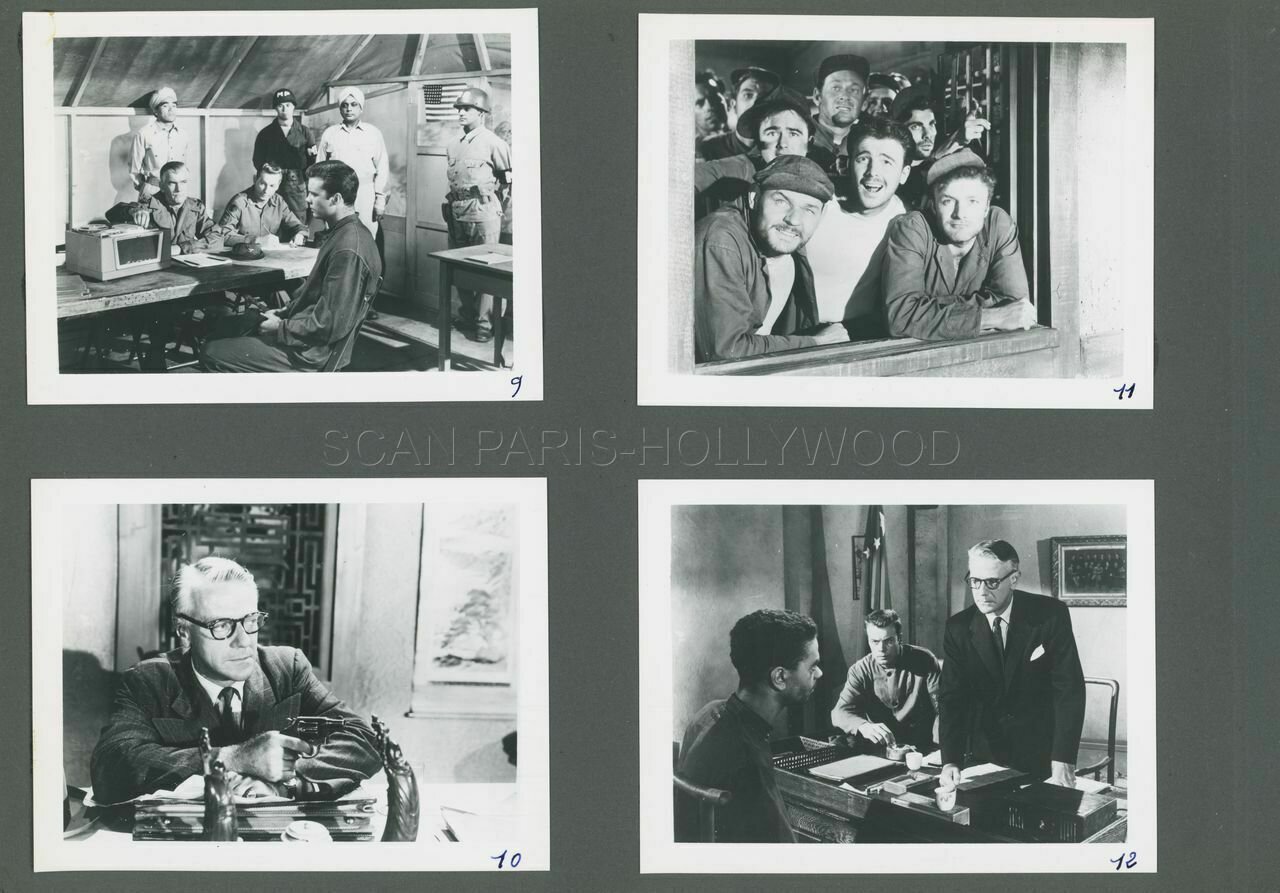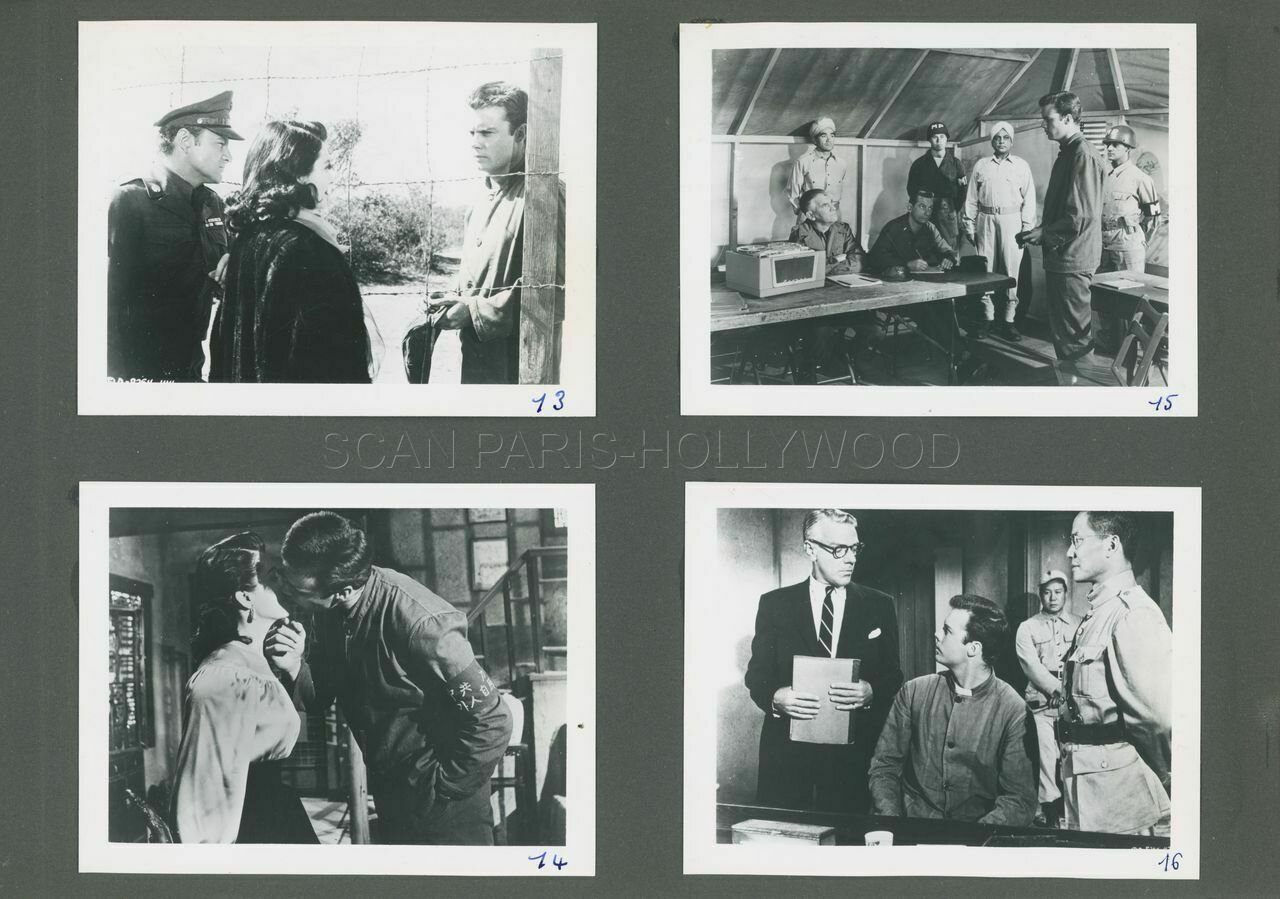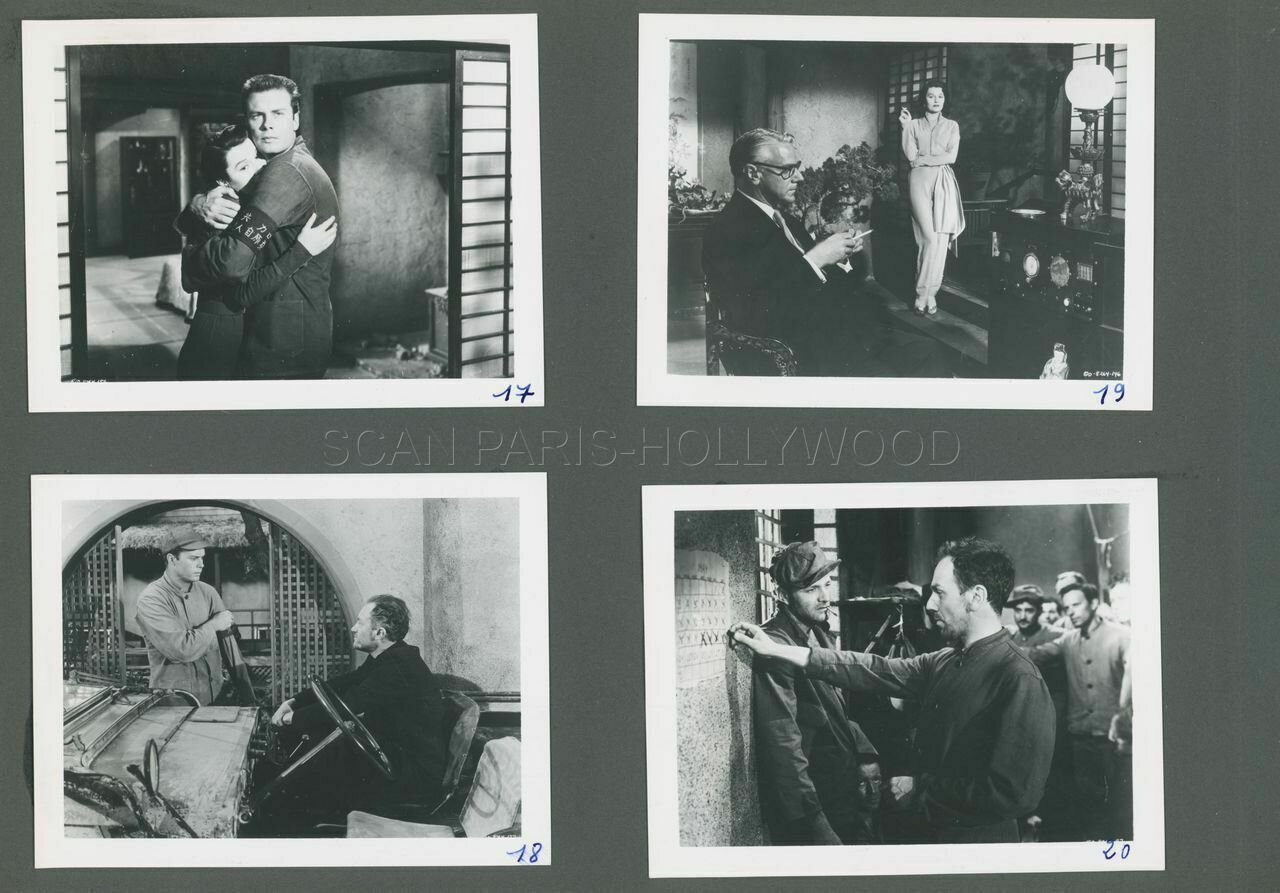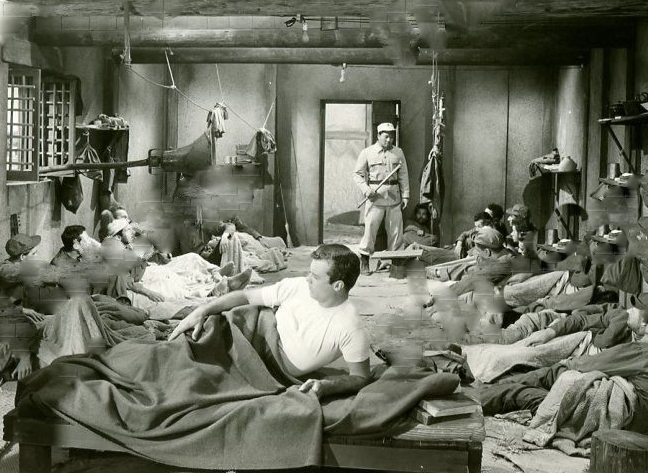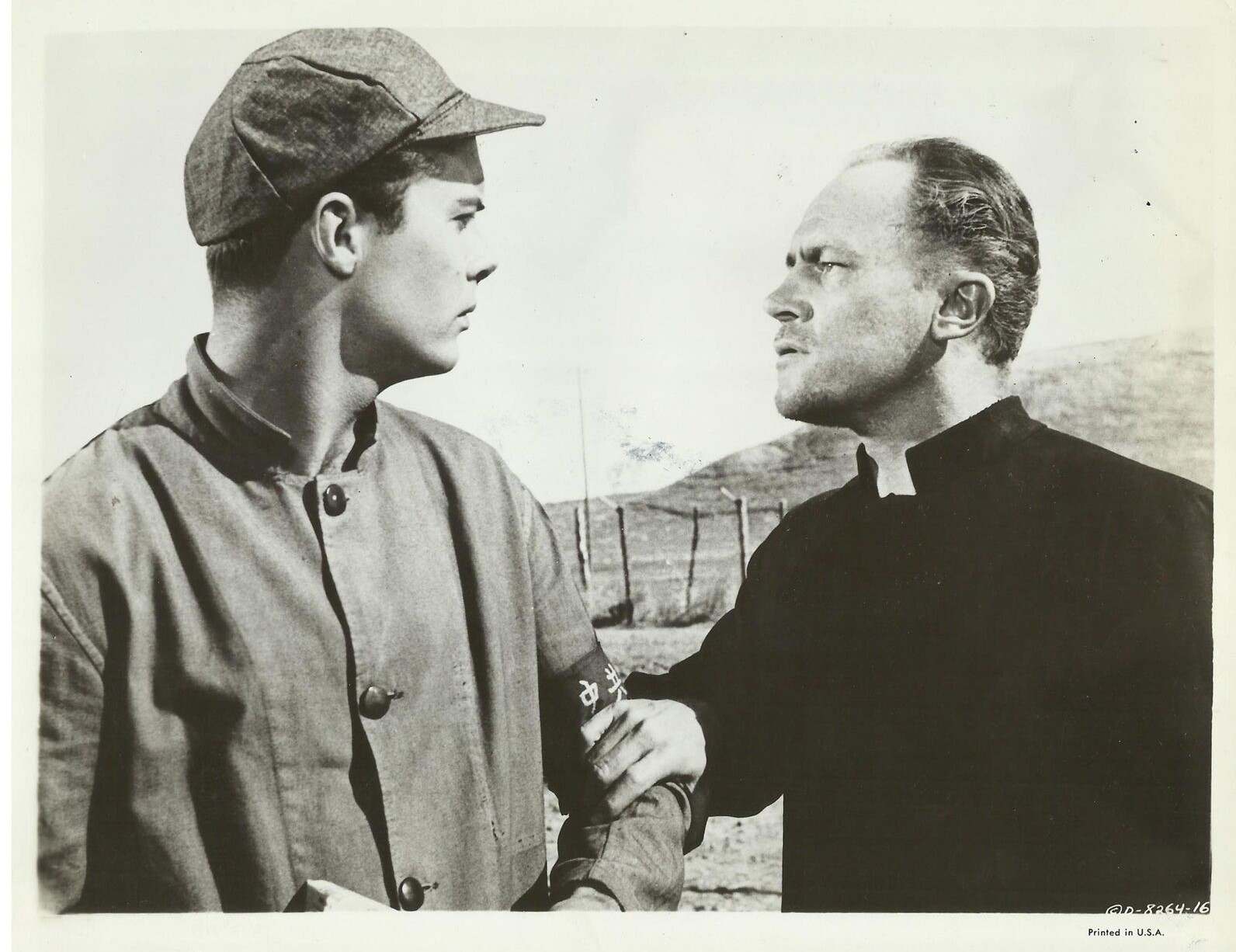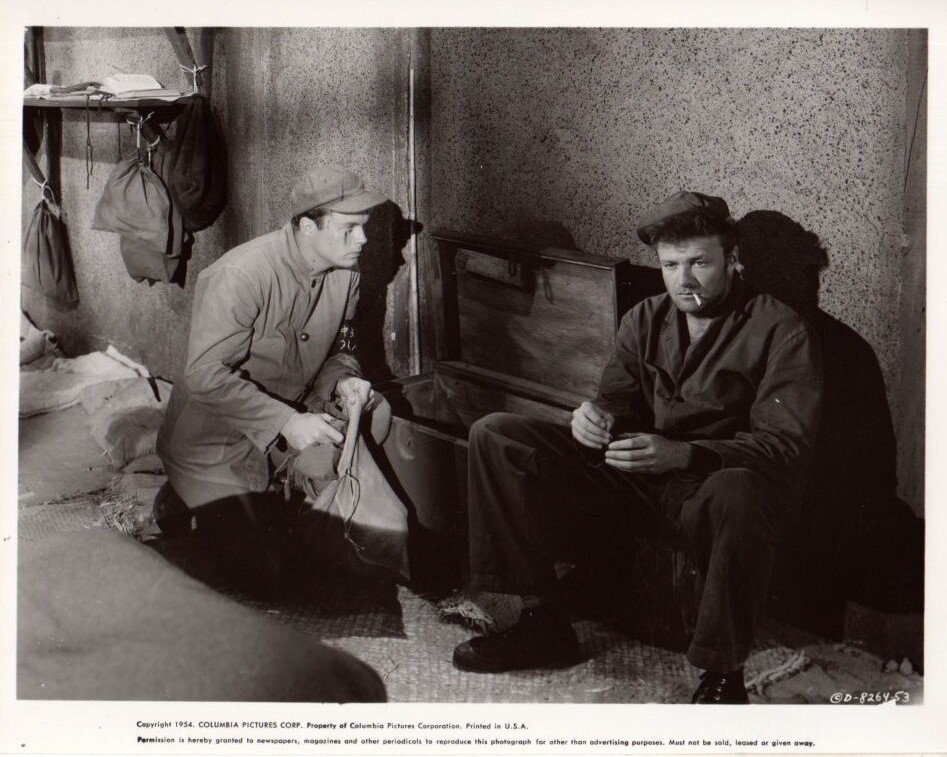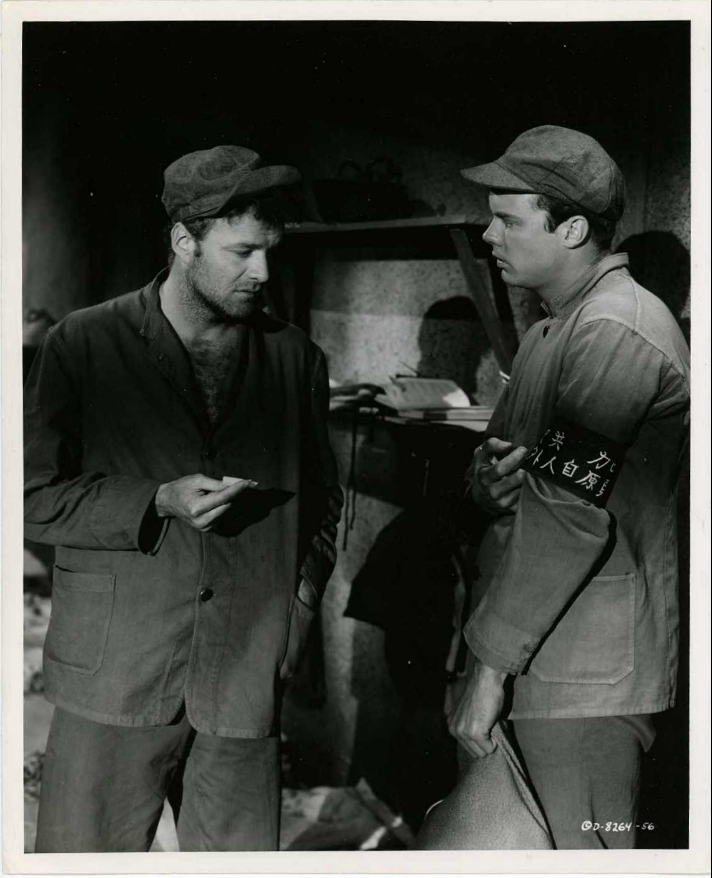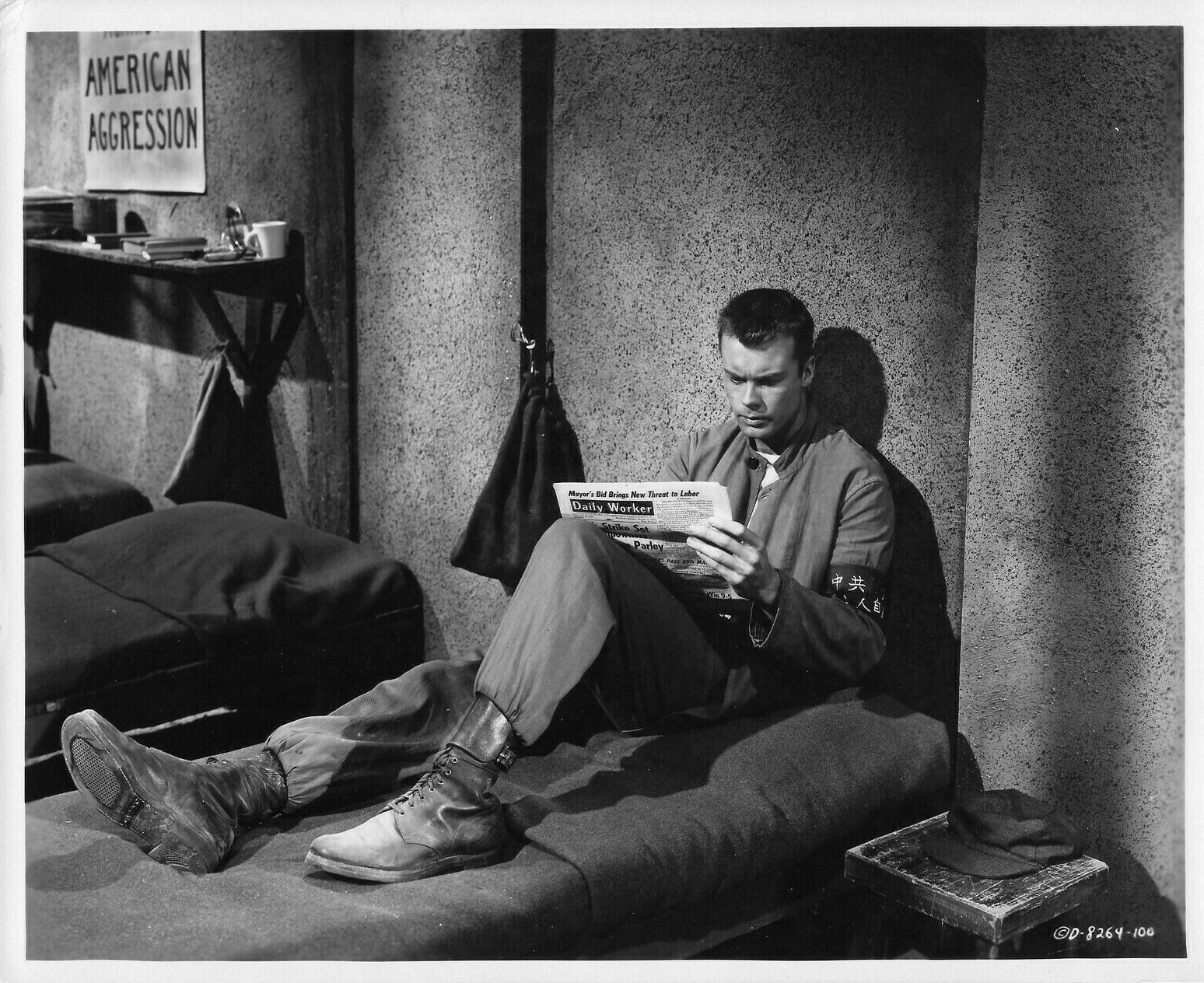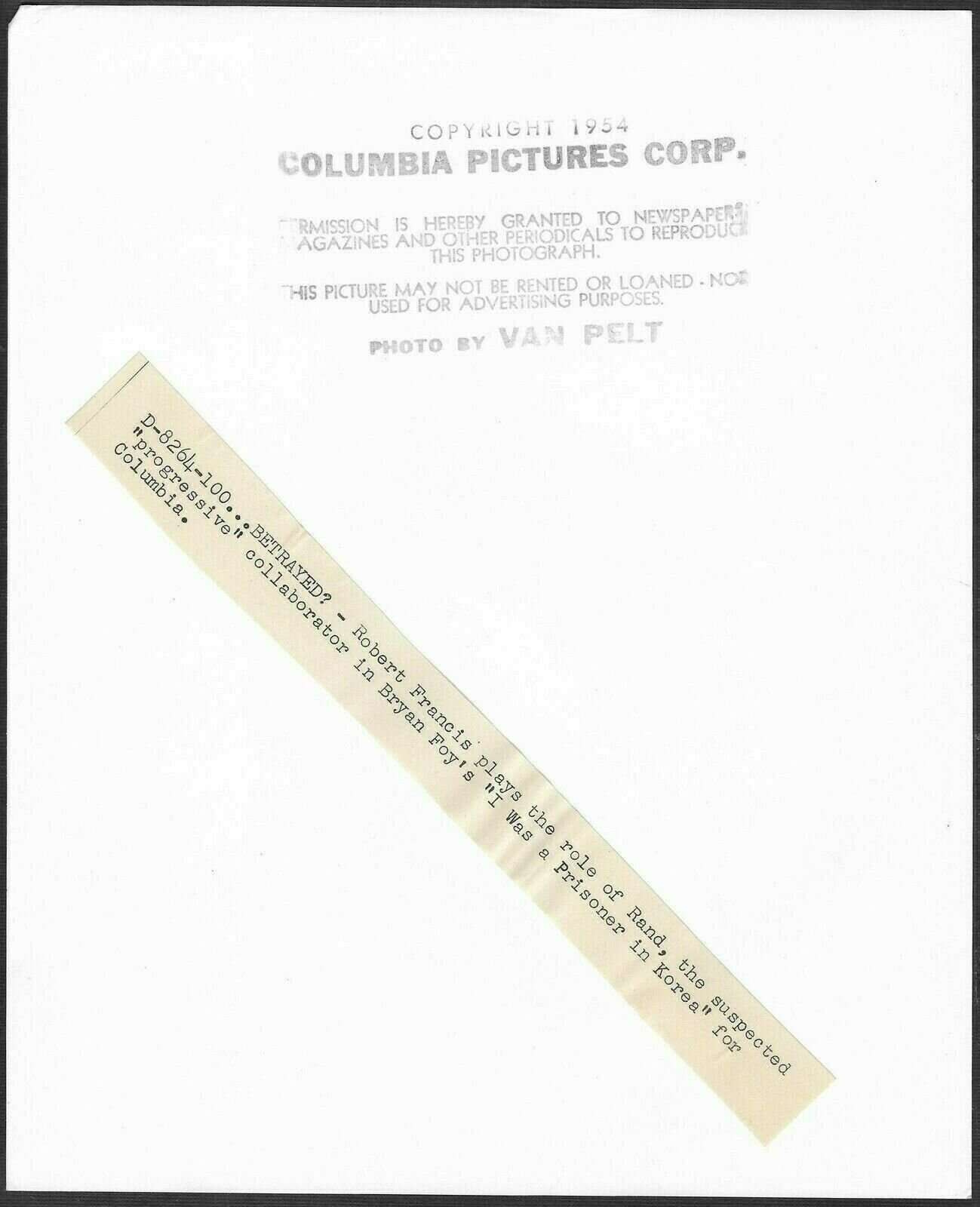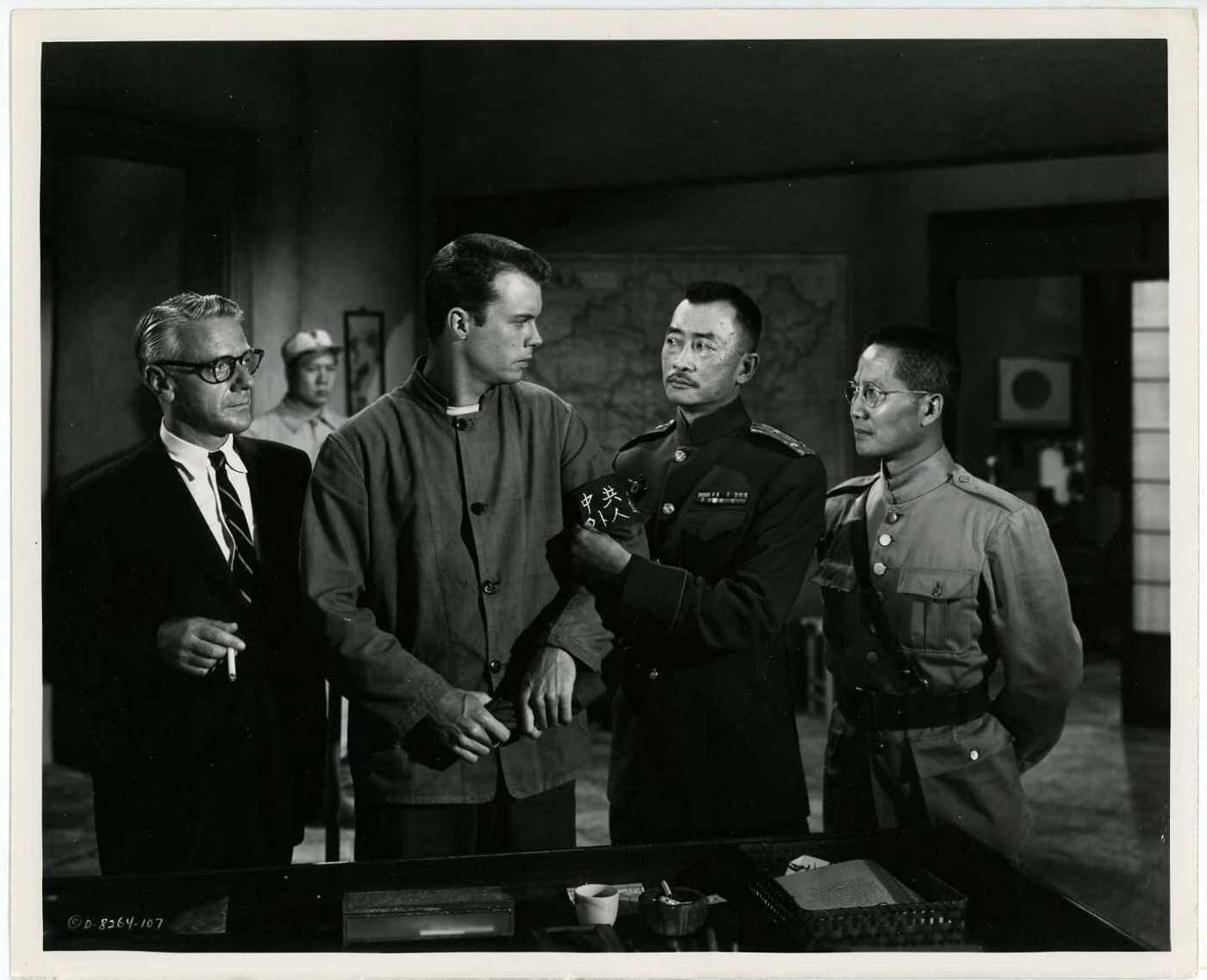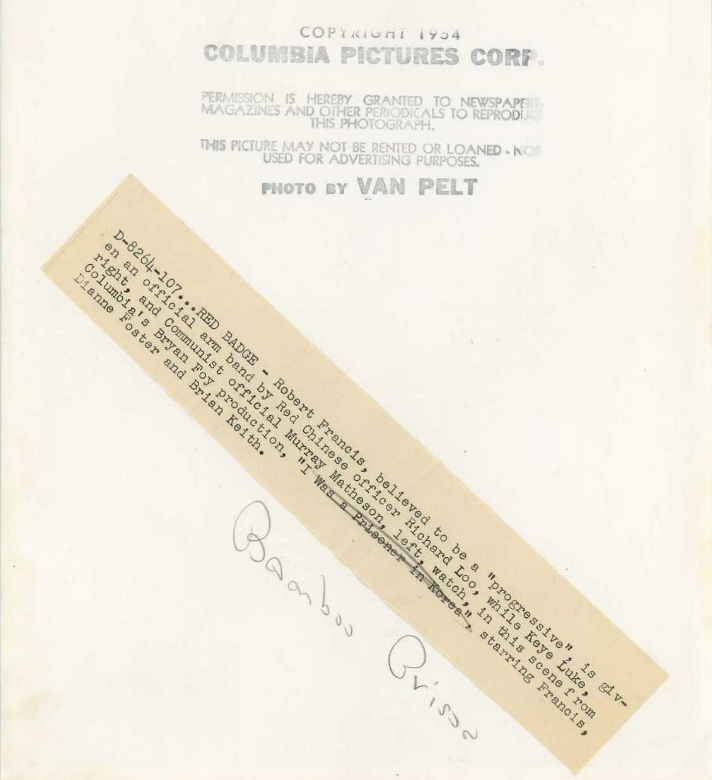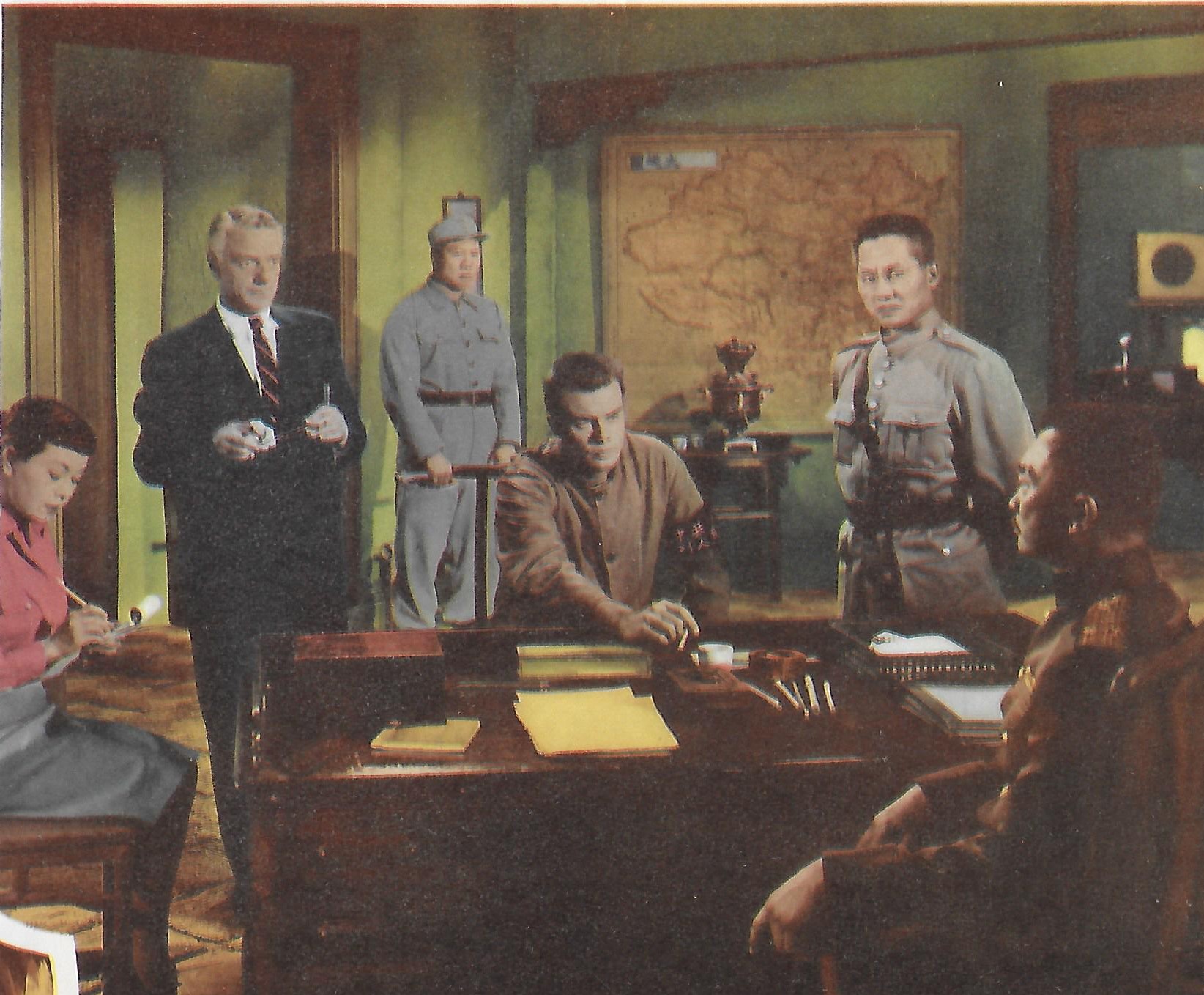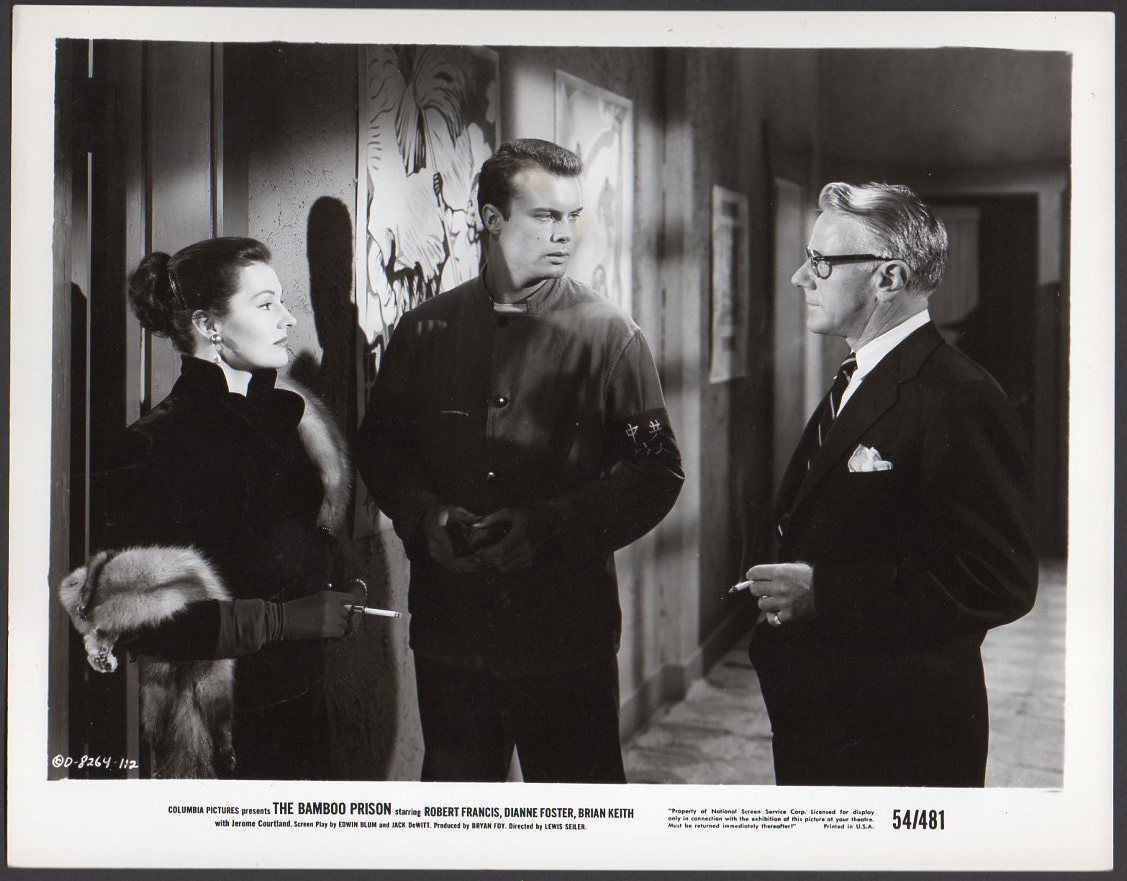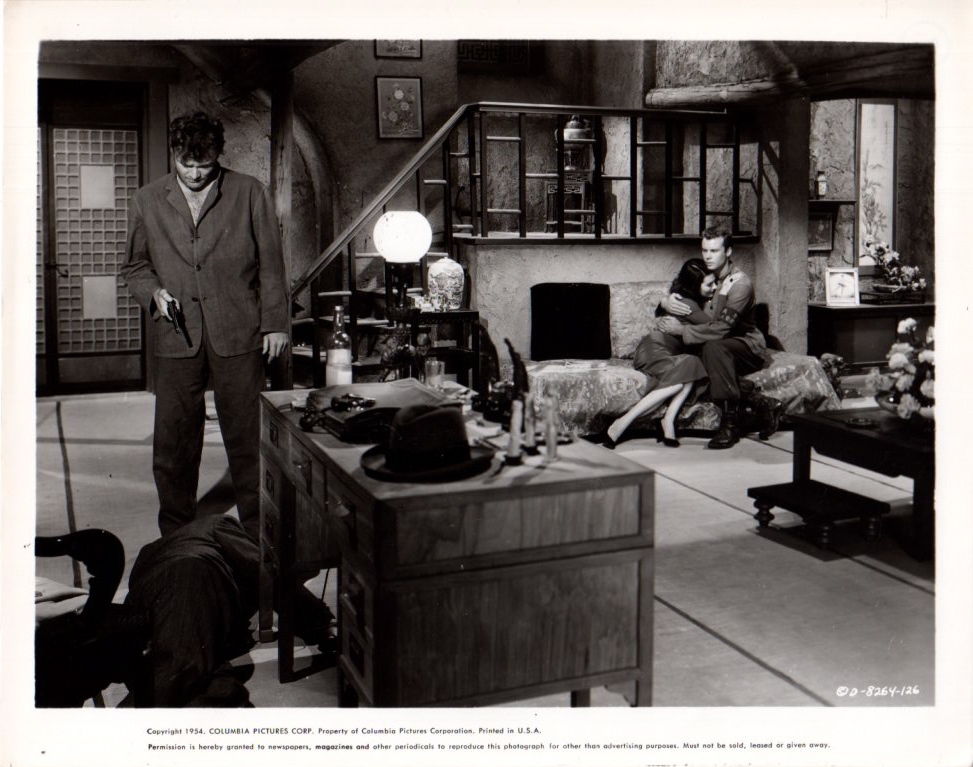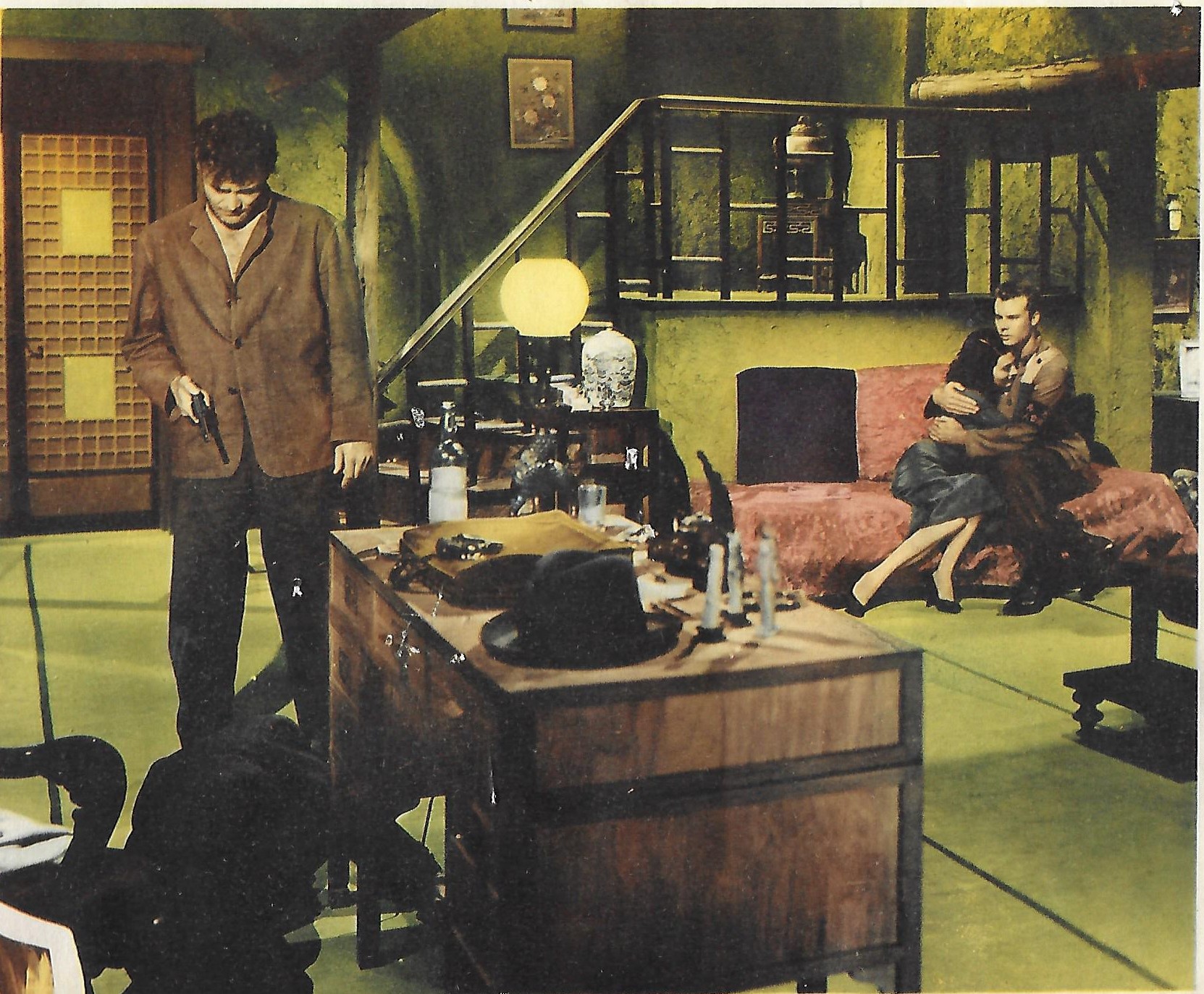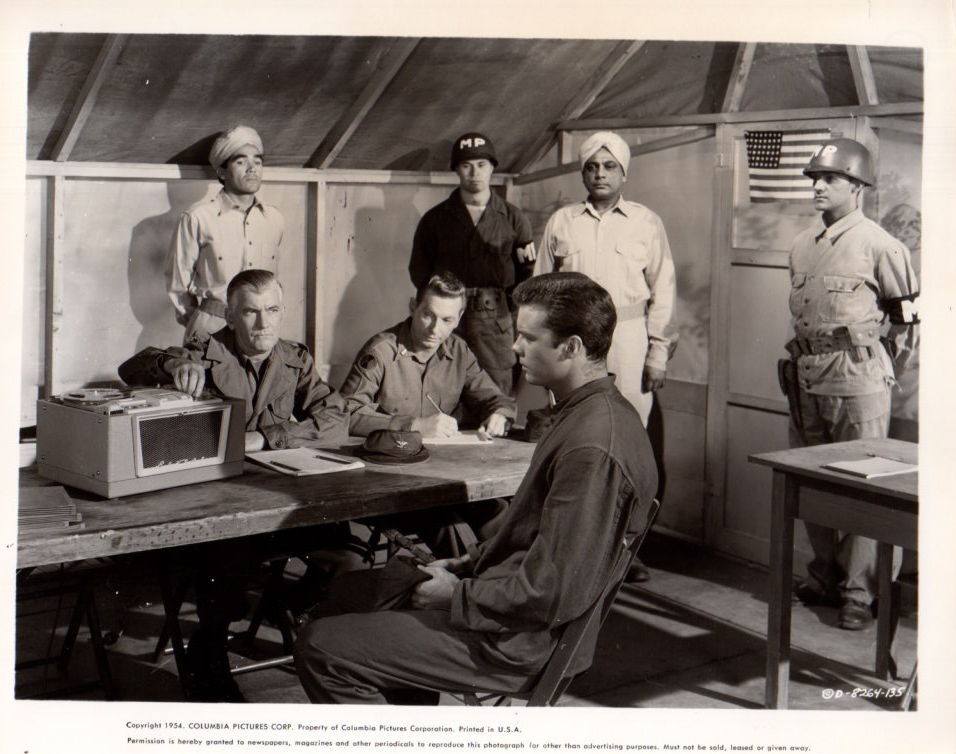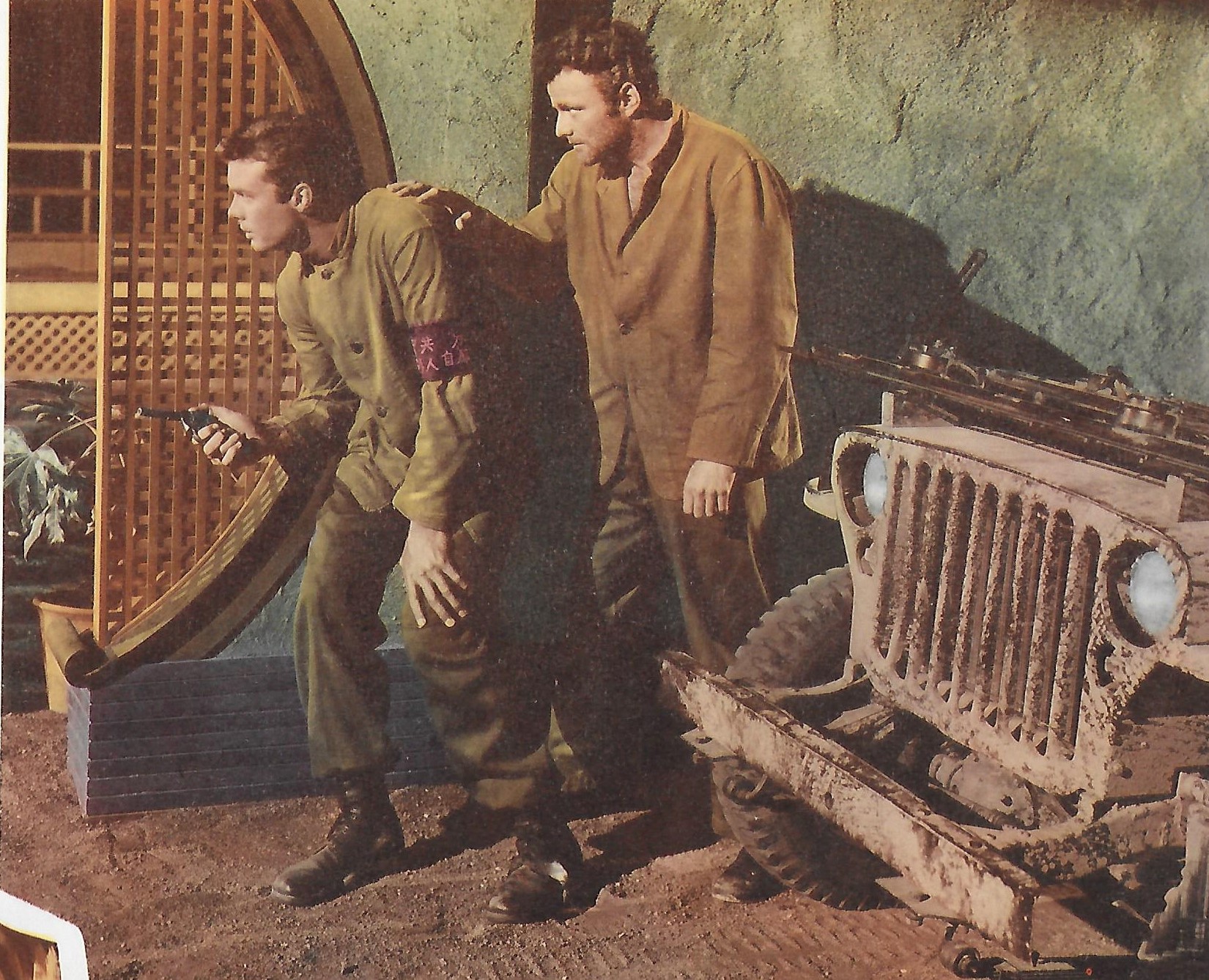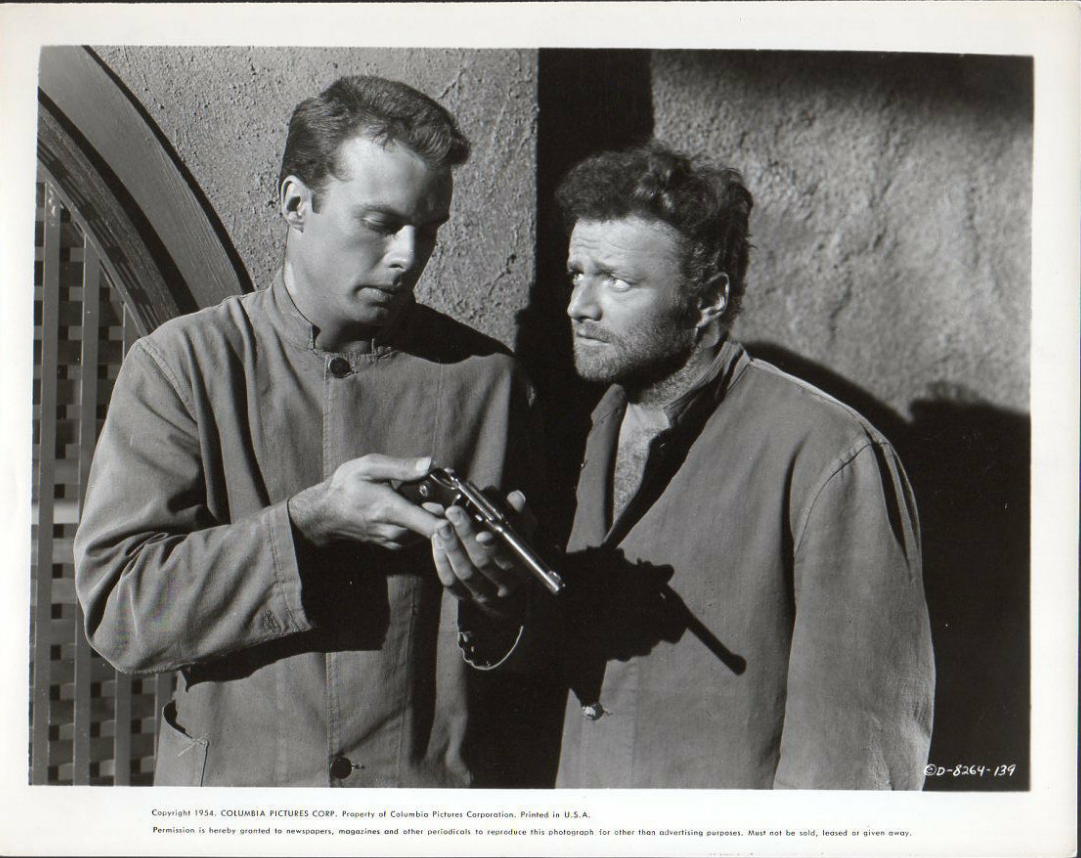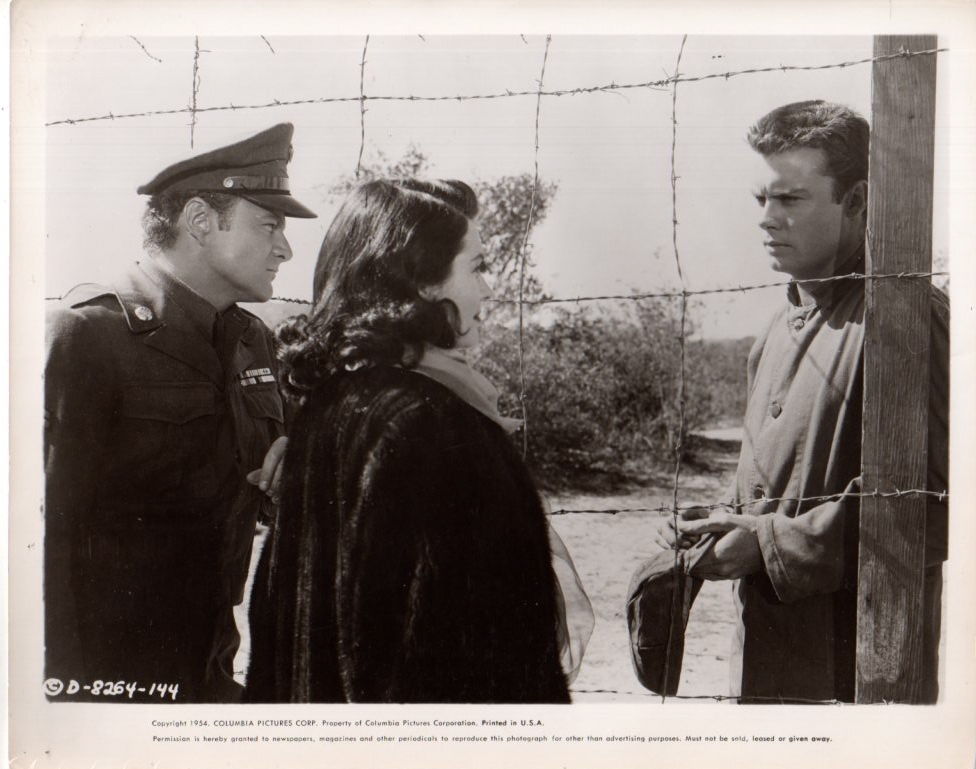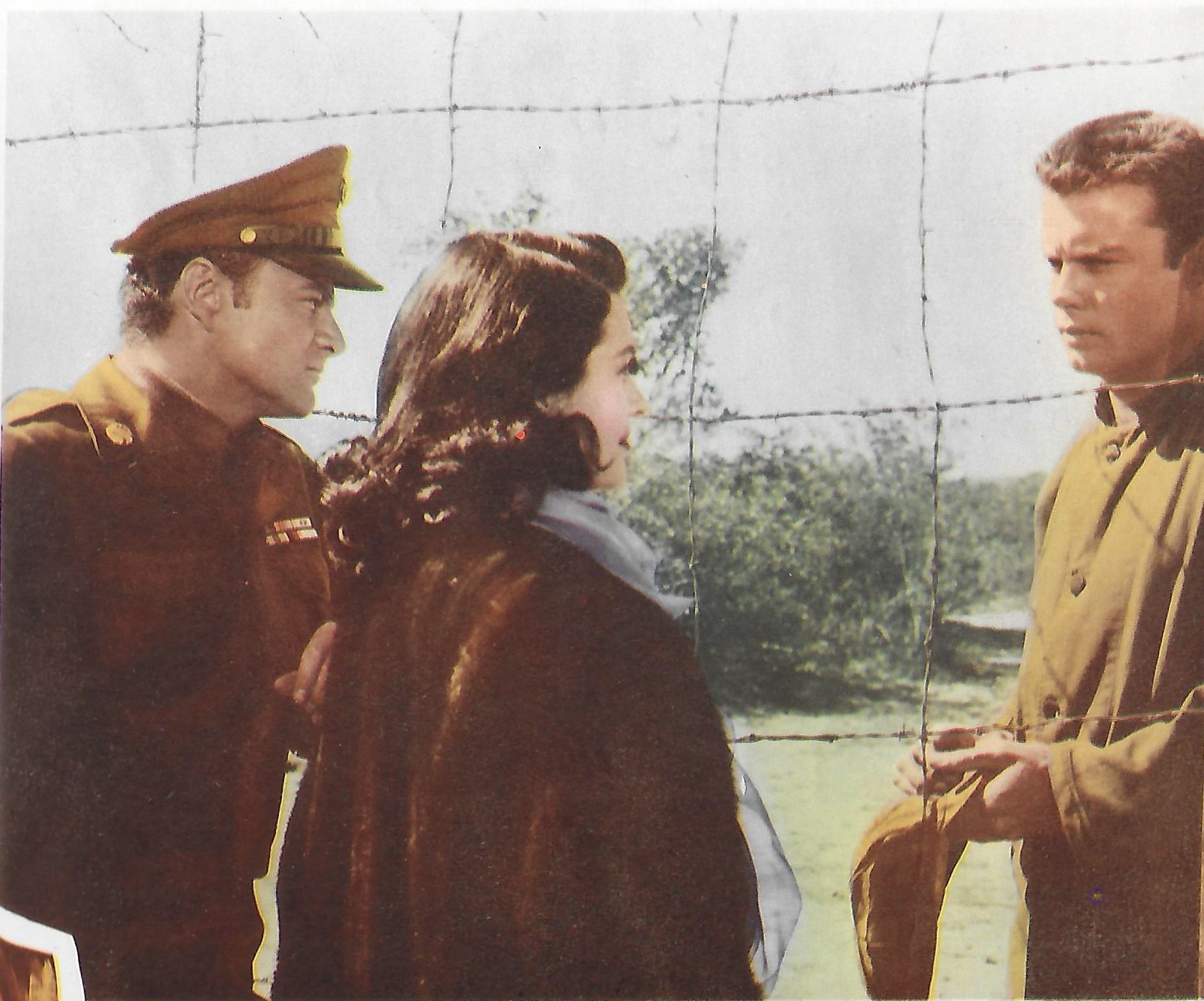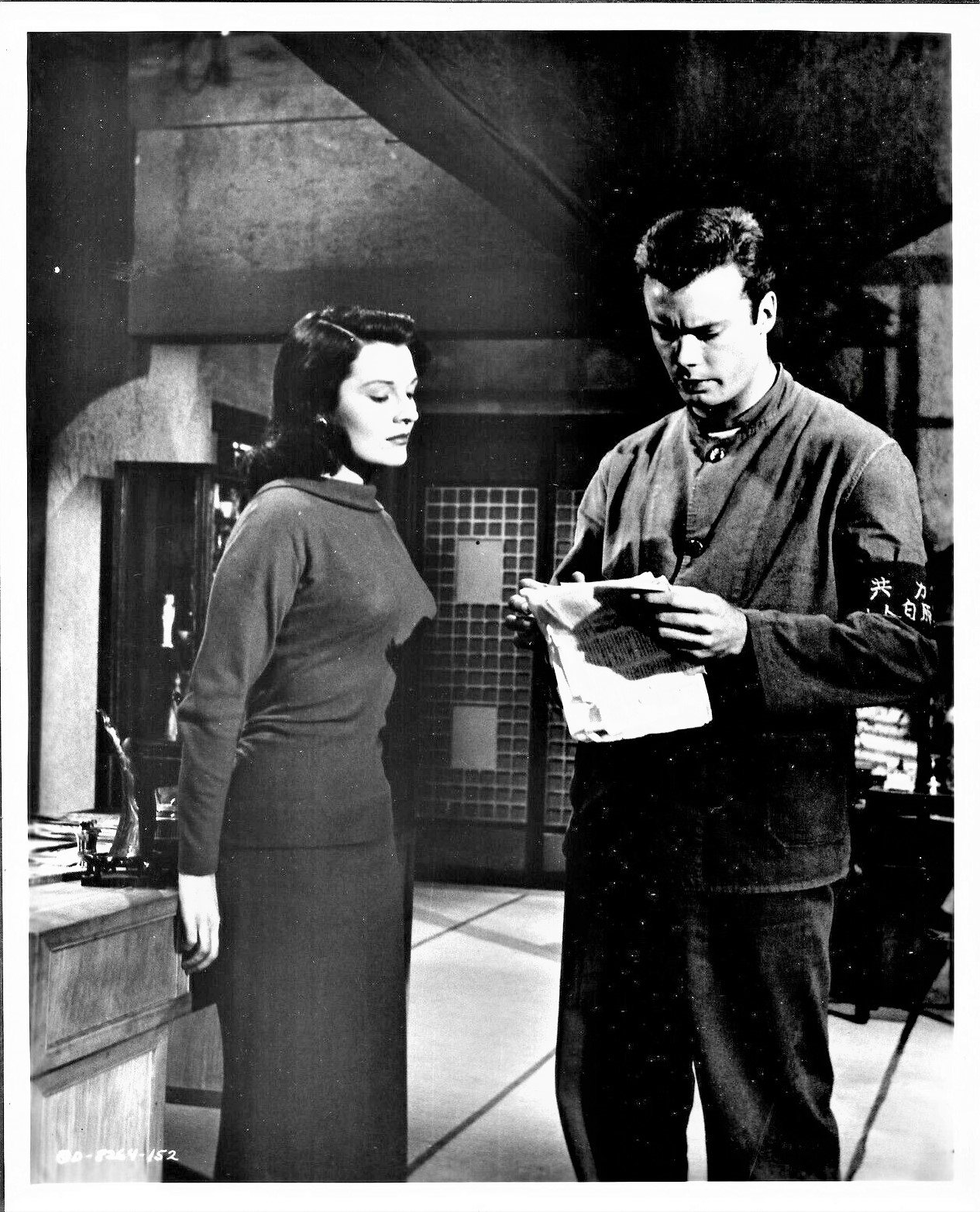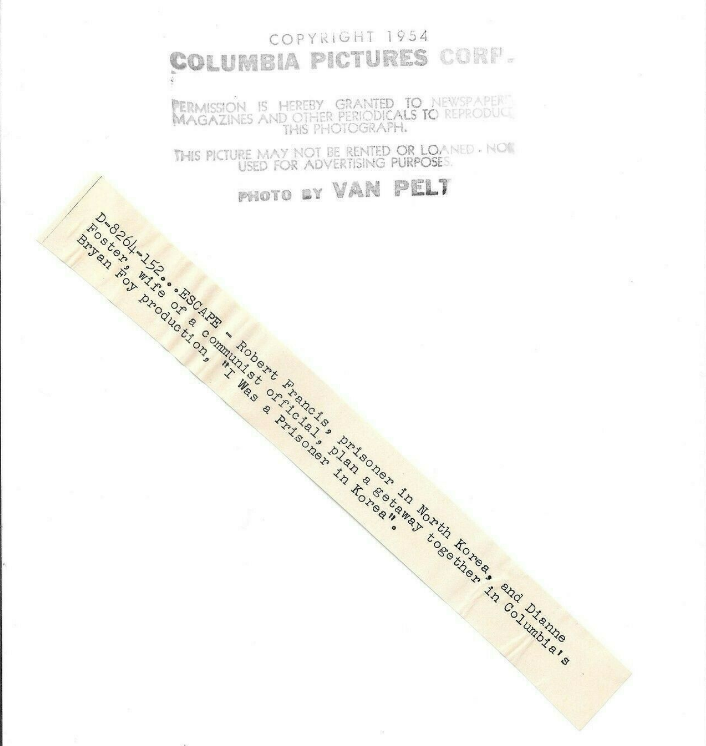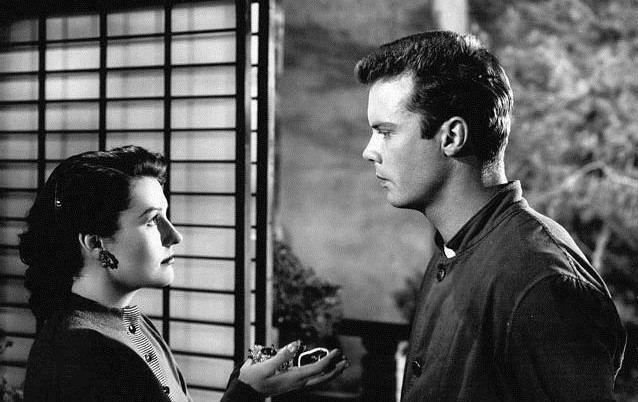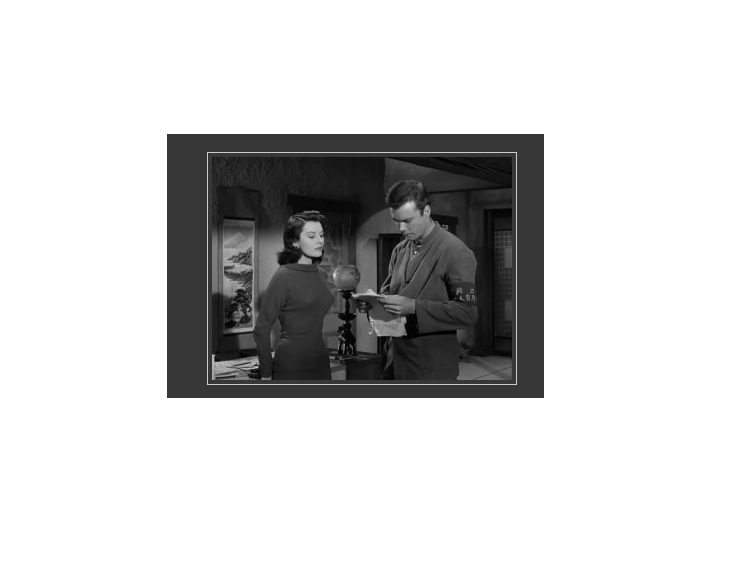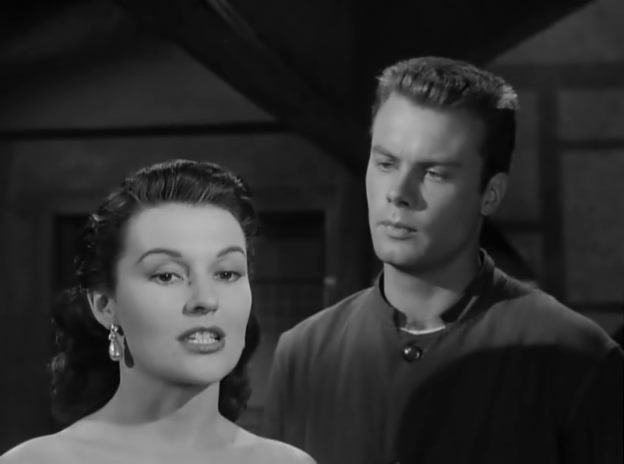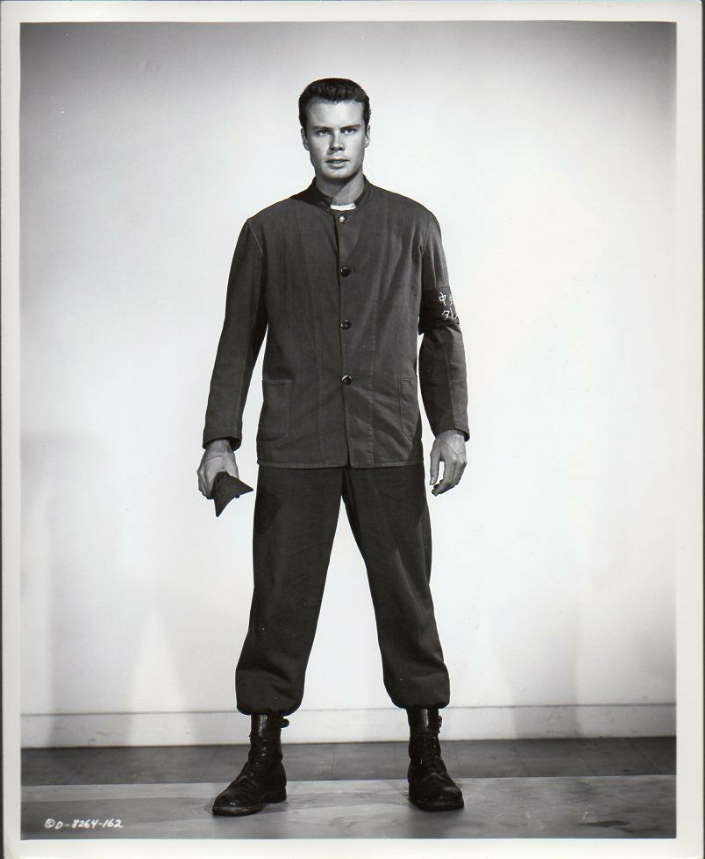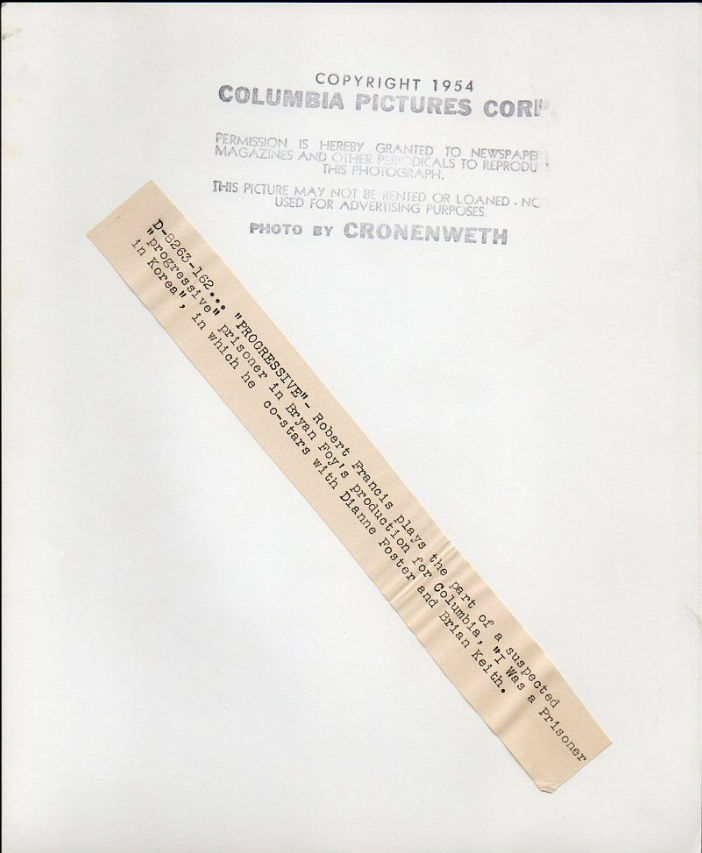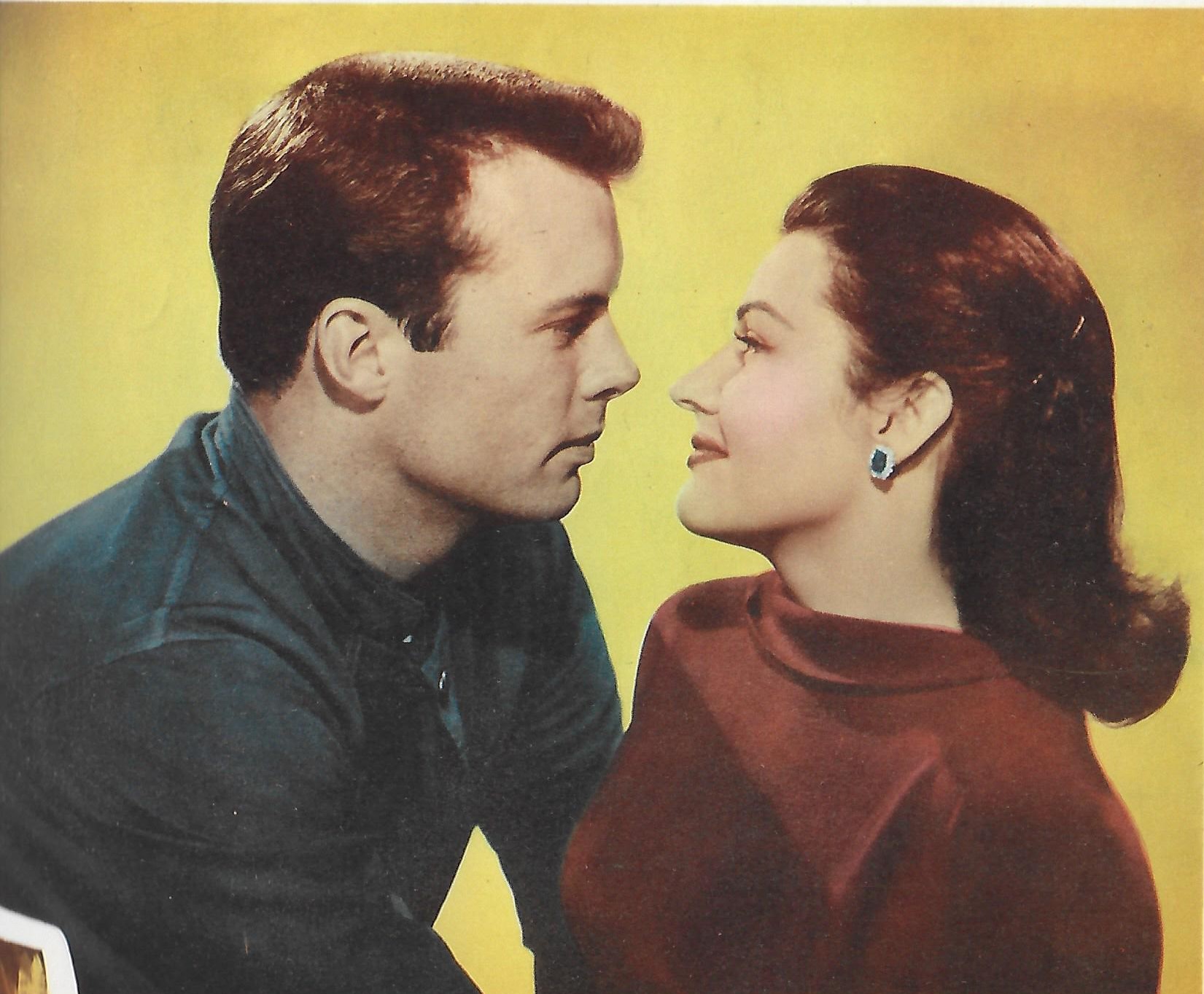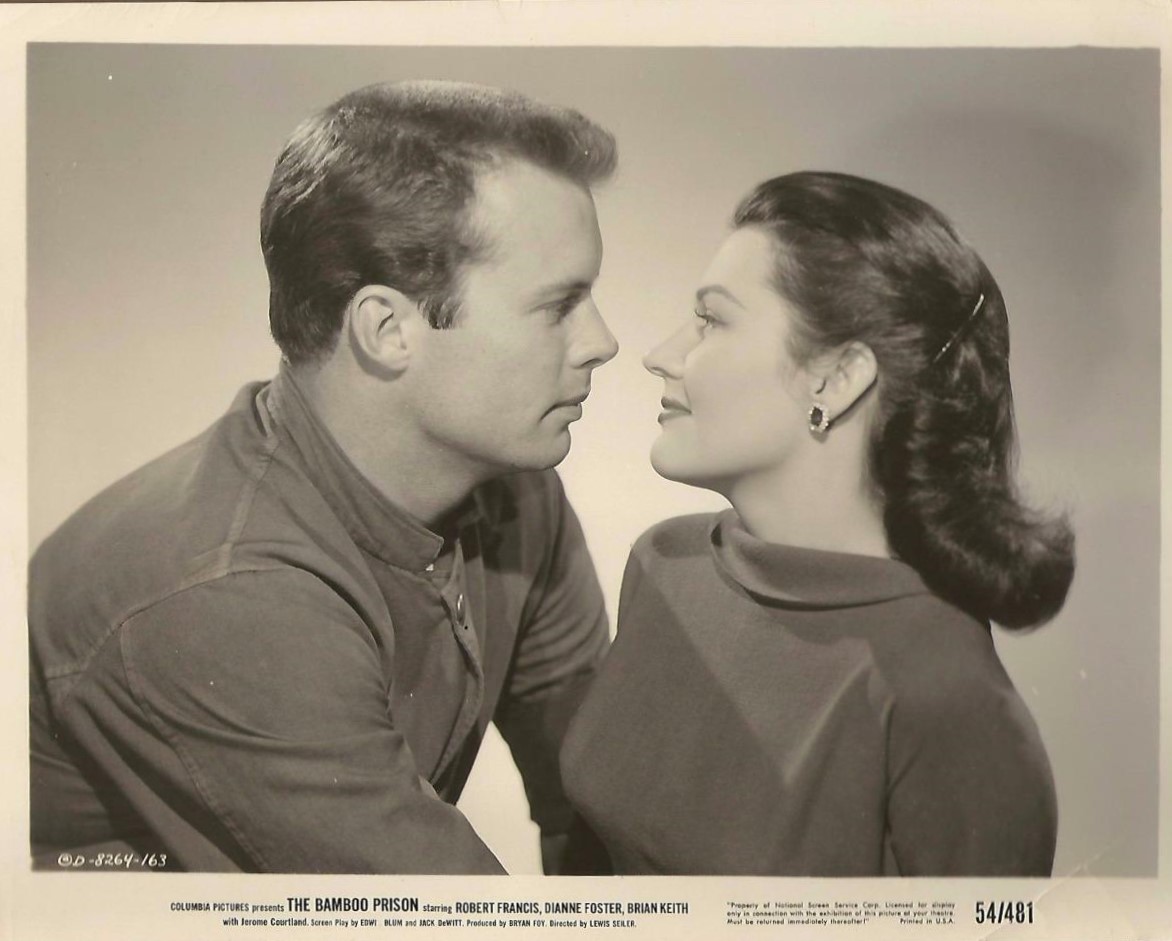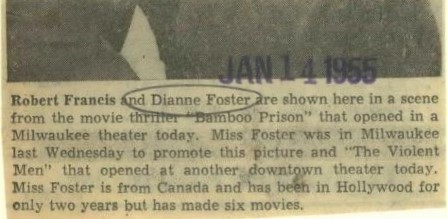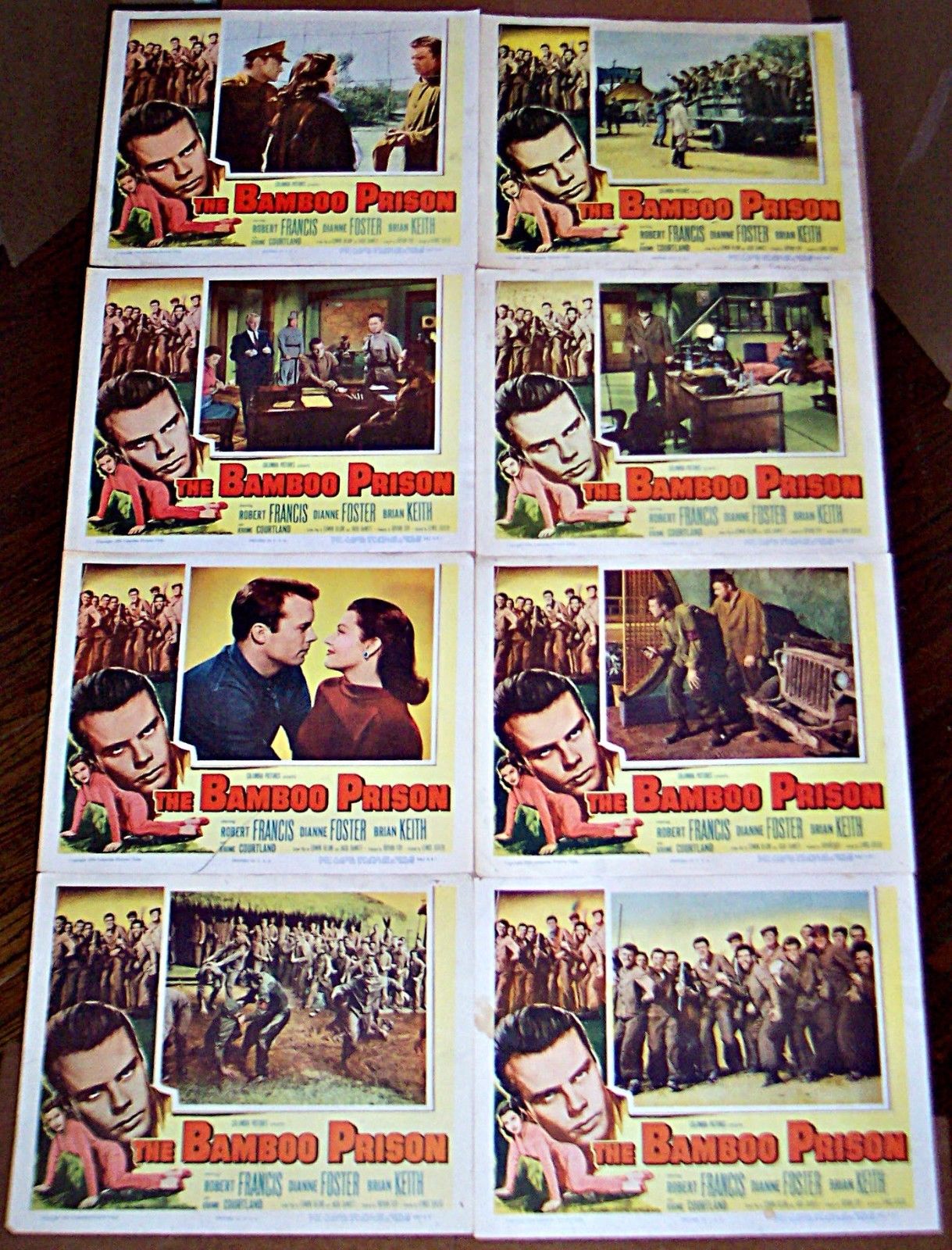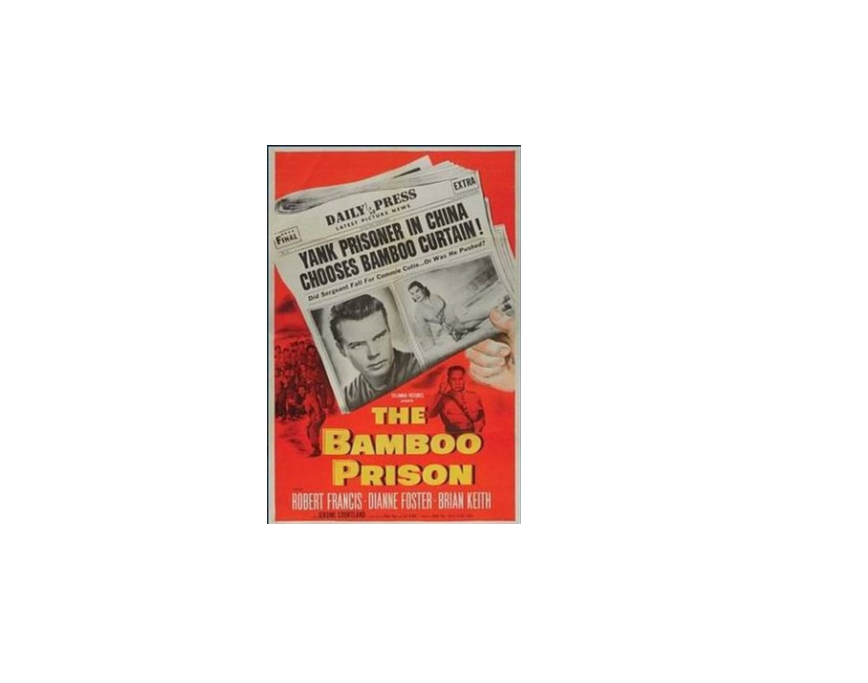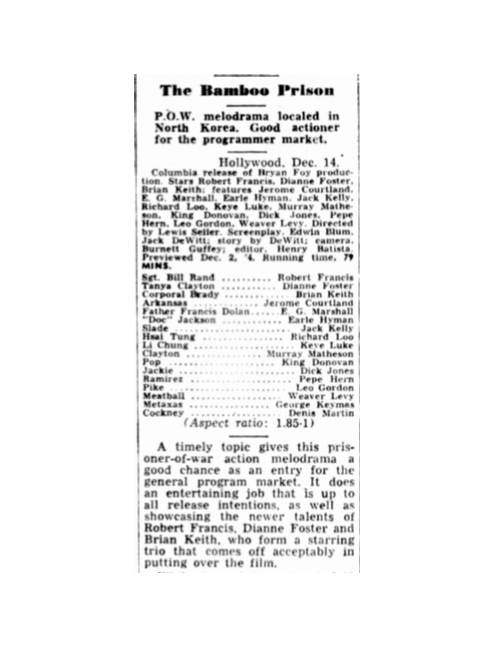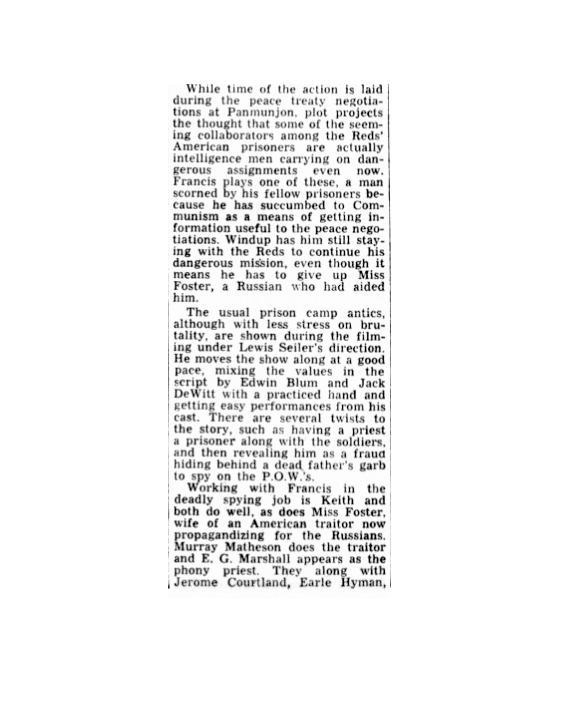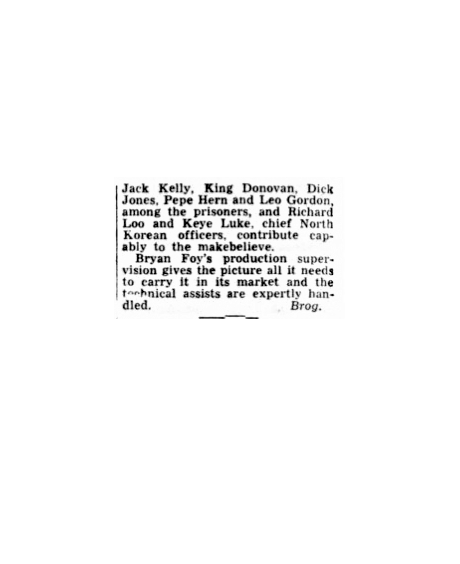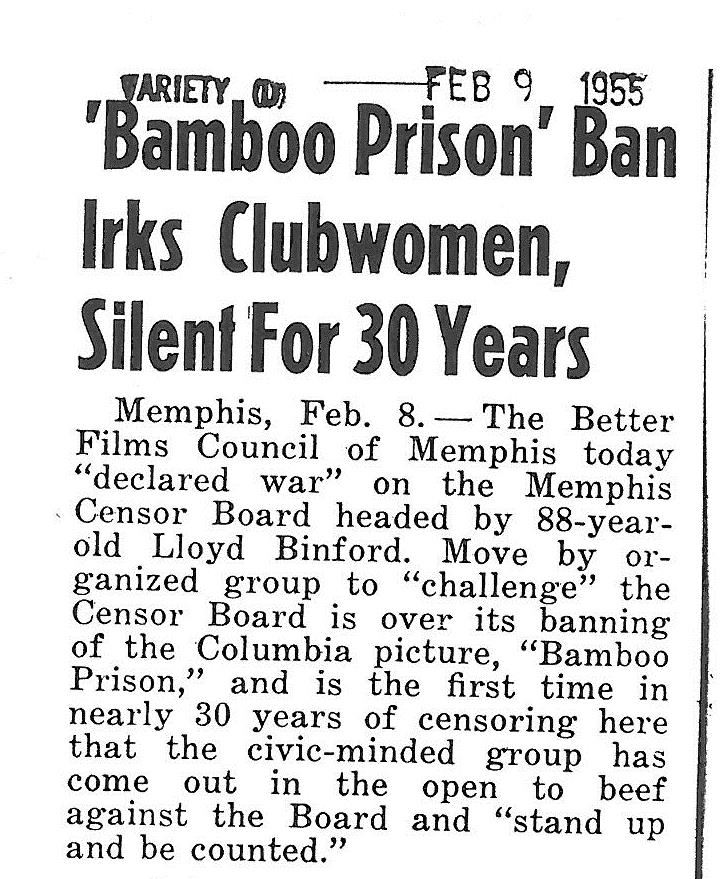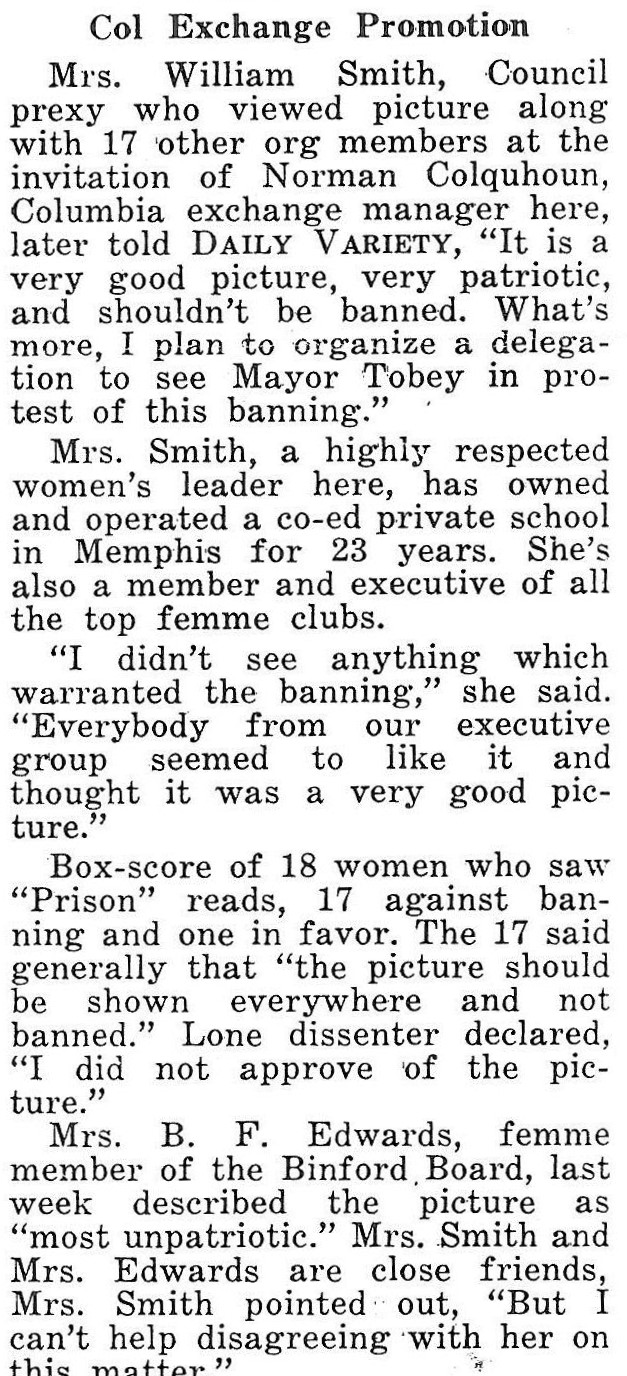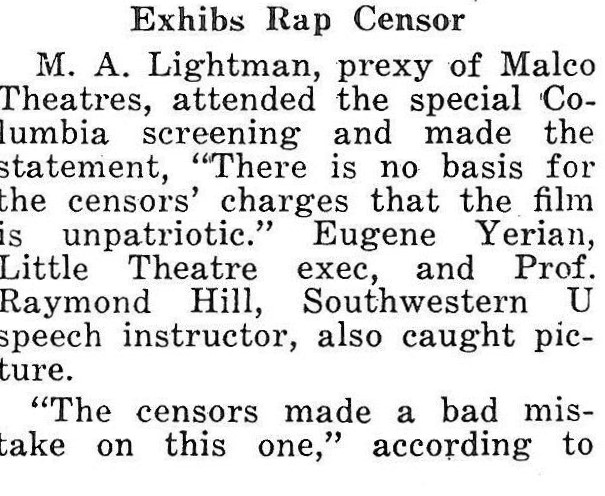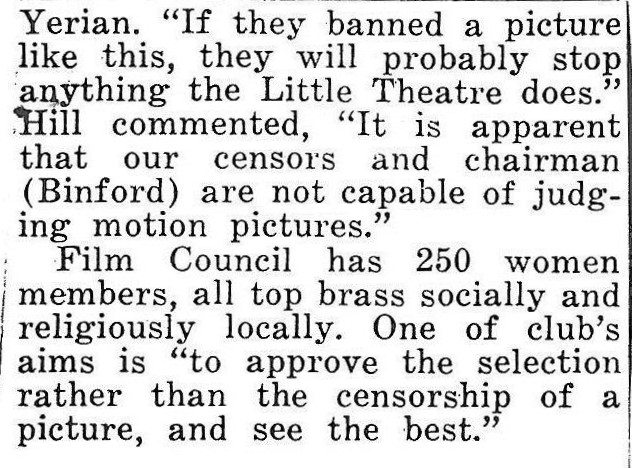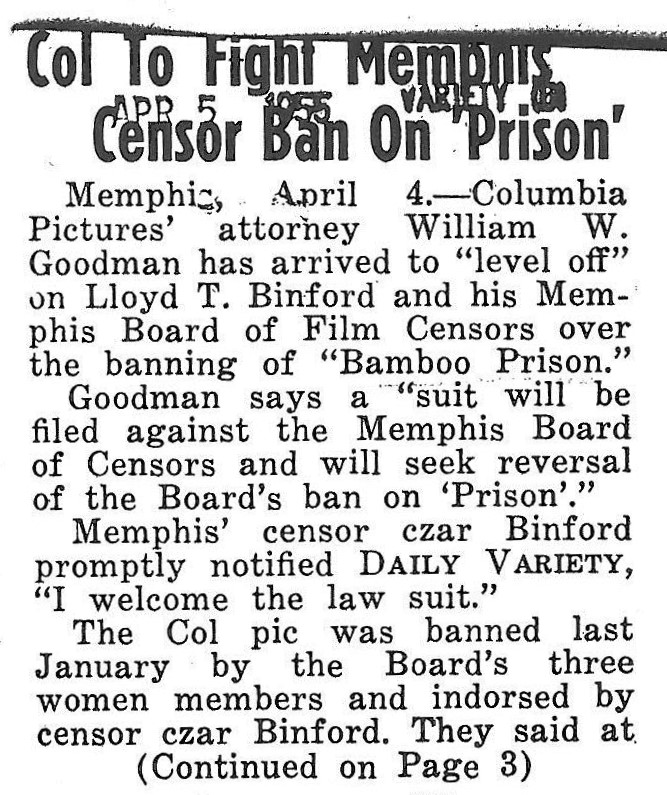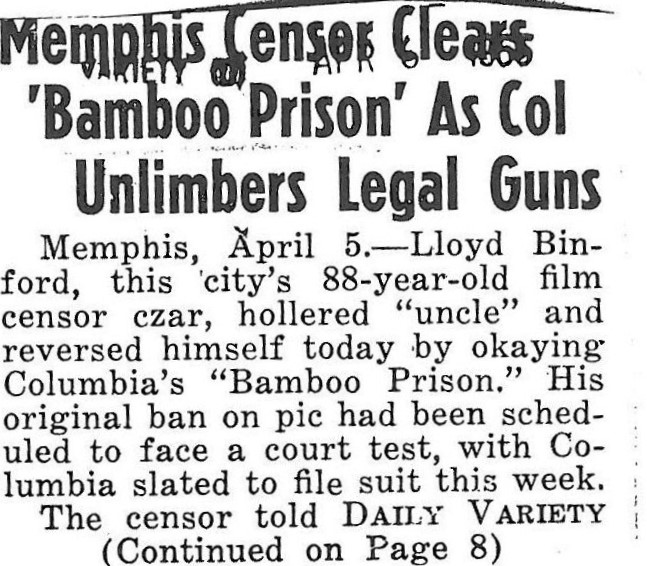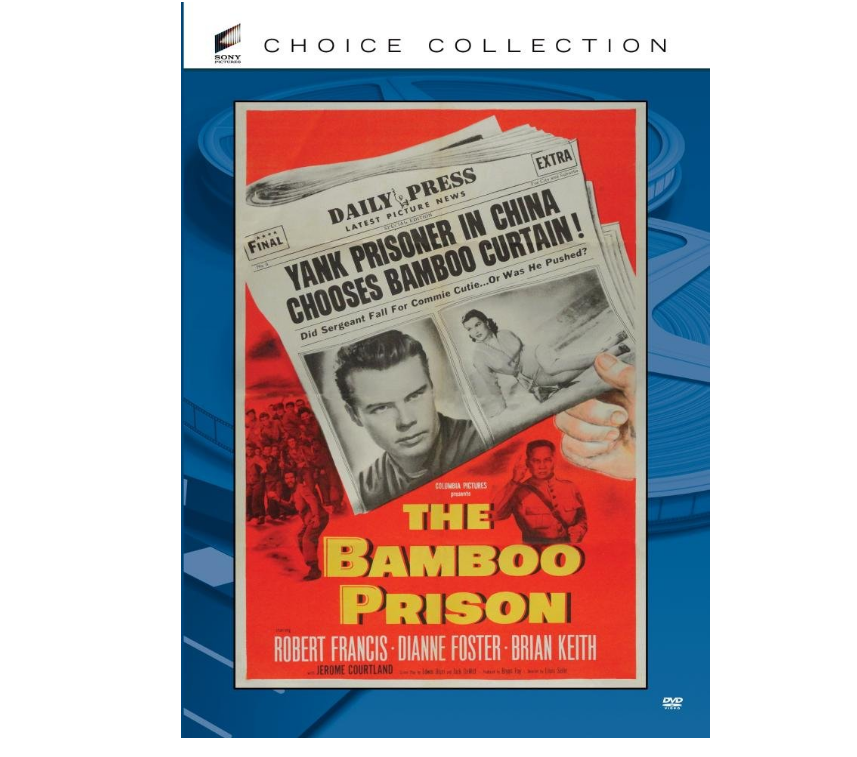The Bamboo Prison (aka Those Reported Missing and I Was a Prisoner in Korea) (1955) (Columbia Pictures)
Production Dates: Late Feb. 1954-early March 1954 (Feb. 22, 1954-March 13, 1954). Locations: Columbia Pictures, Hollywood, Calif. (Exteriors may have been filmed at one of many sites in Los Angeles area that could pass as North Korea.)
Release Date: Jan. 1955
http://www.tcm.com/tcmdb/title/27592/The-Bamboo-Prison/ provides Overview: Full Credits, Full Synopsis, Notes, http://www.tcm.com/tcmdb/title/27592/The-Bamboo-Prison/notes.html Music, Screenplay Info, Original Print Info, Genre, Key Words, User Reviews, Other Reviews, Articles (Money, Awards), http://www.tcm.com/tcmdb/title/27592/The-Bamboo-Prison/articles.html Quotes, Trivia, Home Video Reviews, Miscellaneous Notes, Alternate Versions, Theatrical Aspect Ratio, Video, http://www.tcm.com/tcmdb/title/27592/The-Bamboo-Prison/videos.html Fan Sites
Credits: Bryan Foy, Producer; Lewis Seiler, Director; Burnett Guffey, Director of Photography; Edwin Blum and Jack DeWitt, Screenwriter…. http://www.tcm.com/tcmdb/title/27592/The-Bamboo-Prison/
Cast: Robert Francis, Sgt. John Rand; Dianne Foster, Tanya Clayton; Brian Keith, Corp. Brady; Jerome Courtland, Arkansas; E. G. Marshall, Father Francis Dolan; Jack Kelly, Slade; Keye Luke, Li Chung; King Donovan, Pop; Aaron Spelling, Skinny…. http://www.tcm.com/tcmdb/title/27592/The-Bamboo-Prison/
Full Synopsis: In North Korea, American soldiers captured by the North Korean army are marched to a prisoner-of-war camp, run by the Communist Chinese. The men are angered to discover that their barracks chief, Sgt. John Rand (Robert Francis), has become a collaborator, or "Progressive," in order to receive preferential treatment. http://www.tcm.com/tcmdb/title/27592/The-Bamboo-Prison/full-synopsis.html
Notes: The military truce mentioned in the film refers to the cease-fire agreement reached in 1953 by North Korea and the United States. Signed at P’anmunjom, it provided for a prisoner exchange.
John M. Miller writing for Turner Classic Movies http://www.tcm.com/tcmdb/title/27592/The-Bamboo-Prison/articles.html:
Shot by B-movie producer Bryan Foy for Columbia Pictures, The Bamboo Prison (1955) is an uncharacteristically expensive-looking film about a then-hot and controversial topic. The conflict in Korea had come to a halt with the ceasefire in July 1953, and returning American POWs were intensively questioned and examined, particularly because an unusual percentage had participated in defections and anti-American propaganda while in captivity. During the war, there was much discussion of "thought reform" and "coercive persuasion" techniques used by Chinese captors to an extent never seen before. In 1950, the term "brainwashing" entered the lexicon, and that extended, of course, to popular culture and movies.
The screenplay for The Bamboo Prison (by Edwin Blum and Jack DeWitt) was obviously influenced by Billy Wilder's recent (and very successful) WWII comedy-drama Stalag 17 (1953). It freely "borrows" several aspects of that film's plot and character types, but introduces a brainwashing motivation as well as a major female character. Following a 40-day death march, the 70 survivors from a group of 166 U.S. and United Nations soldiers and peacekeepers are led into a North Korean Prisoner-of-War camp. The new arrivals in Barracks #3 are furious to learn that the only cot available is reserved for MSgt. John A. Rand (Robert Francis), who is, in the words of one prisoner, a "stinking collaborator. Commies have a fancy name for it - Progressive." The other men are treated terribly, lacking proper medication and food, while mornings are brutally interrupted by blaring music played though loudspeakers. Father Francis Dolan (E. G. Marshall) does what he can to help morale by smuggling occasional bars of soap or other items to the men. A constant at the camp are the lectures by Li Ching (Keye Luke) and other brainwashing attempts by the Chinese Communists. During one lecture, "Arkansas" (Jerome Courtland) mocks the session by leading the men in a sarcastic song called "Oh, We've Never Had It So Good Before." When Rand points out the mockery, "Arkansas" is sent to the Icehouse solitary confinement because, "you have answered Proletarian hospitality with Bourgeois ingratitude." One of the new arrivals, Cpl. Brady (Brian Keith), observes the men's treatment of Rand, and learns the truth about Rand's beliefs during a private conversation. Rand continues to earn special privileges, including contact with Russian brainwashing expert Comrade Clayton (Murray Matheson) and his wife Tanya (Dianne Foster), a former ballerina.
In his book A guide to films on the Korean War, Paul M. Edwards writes that The Bamboo Prison "...attempts to be the Korean Stalag 17 (1953). ...[It] tries, and generally fails, to provide an excuse for those prisoners who, after years of confinement and re-training, made their decision not to return to the United States. The film's suggestion, that some Americans who were called 'turncoats' in the Korean and Chinese prisoner-of-war camps, were there as agents working for the United States, does not hold water. There is no evidence this was true for Americans, but was in fact the case for the Chinese, who deliberately sent men to be captured in order to organize the camps and cause difficulty later on." Edwards asserts that producer Foy sought out approval from the Defense Department, but the U.S. military did not offer any assistance to the film, "...because at the time the film was being prepared, the United States government was planning to prosecute some returned POWs. It was felt that the projected film would mislead Americans about the prisons as well as the prisoners."
Edwards also wrote, "Despite its many flaws and limited accuracy, this film did provide a strong introduction to the experience that has been identified as 'brainwashing.' And, despite efforts to the contrary, it showed Americans as being rather weak when dealing with captivity. The captured Americans displayed little or no confidence when placed under serious stress or crisis." This latter point may have been one reason that The Bamboo Prison ran into some censorship trouble upon release. In Jan. of 1955 local censors in Memphis, Tenn., announced that they would ban the film, and called it ‘unpatriotic’ and ‘[not] a good picture for our young people to see.’ Columbia Pictures responded in April by threatening suit against the Memphis Board of Censors. In an April 9, 1955, article in Boxoffice magazine titled ‘Memphis “Chickens Out” On Censorship Test,’ a lawyer for Columbia, William W. Goodman, said he was actually disappointed that the ban was not challenged in court. ‘We did not ask the board to reverse itself,’ he said. ‘Frankly, I wish they hadn't. We don't like censorship per se, and not the kind used on The Bamboo Prison. I believe we would have had the matter reversed in the lower court, but if not there, in the higher court.’ The article noted that the chairman of the censor board, Lloyd T. Binford, was 88 years old, and that the other three members of the board, all women, were divided on the ban reversal. One of the women, a Mrs. St. Elmo Newton, agreed to the reversal but told Boxoffice, ‘I still think it's a rotten picture, though.’”
The Bamboo Prison was the first production of Producer Bryan Foy’s Yof Corporation (Foy spelled backwards).
Columbia’s early publicity and reports lists Robert Francis’ character as “Sgt. Bill Rand,” but he is referred to as “John” throughout the film.
Keye Luke makes a memorable appearance as Comrade-Instructor Li Ching, a Chinese officer in charge of “thought reform.” Humor comes from his being clueless to sarcasm, so the POWs have fun at his expense. Nicknames are common and at one point a prisoner spies Li Ching approaching the barracks and says, “Here comes Charlie Chan.” This now politically incorrect gag serves double duty as an inside joke as Keye Luke played Lee Chan, the #1 Son of the famed detective, in numerous films dating back to 1935.
E.G. Marshall also appeared in The Caine Mutiny and Jack Kelly also appeared in They Rode West with Bob.
Each Gallery devoted to Bob’s films includes, in general, images and text related to the pre-production period, candid photos made on location and during filming, scenes from the film, promotion and publicity materials, and the post-production period (publicity, opening events, personal appearance tours).
Click on images below to enlarge.


